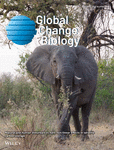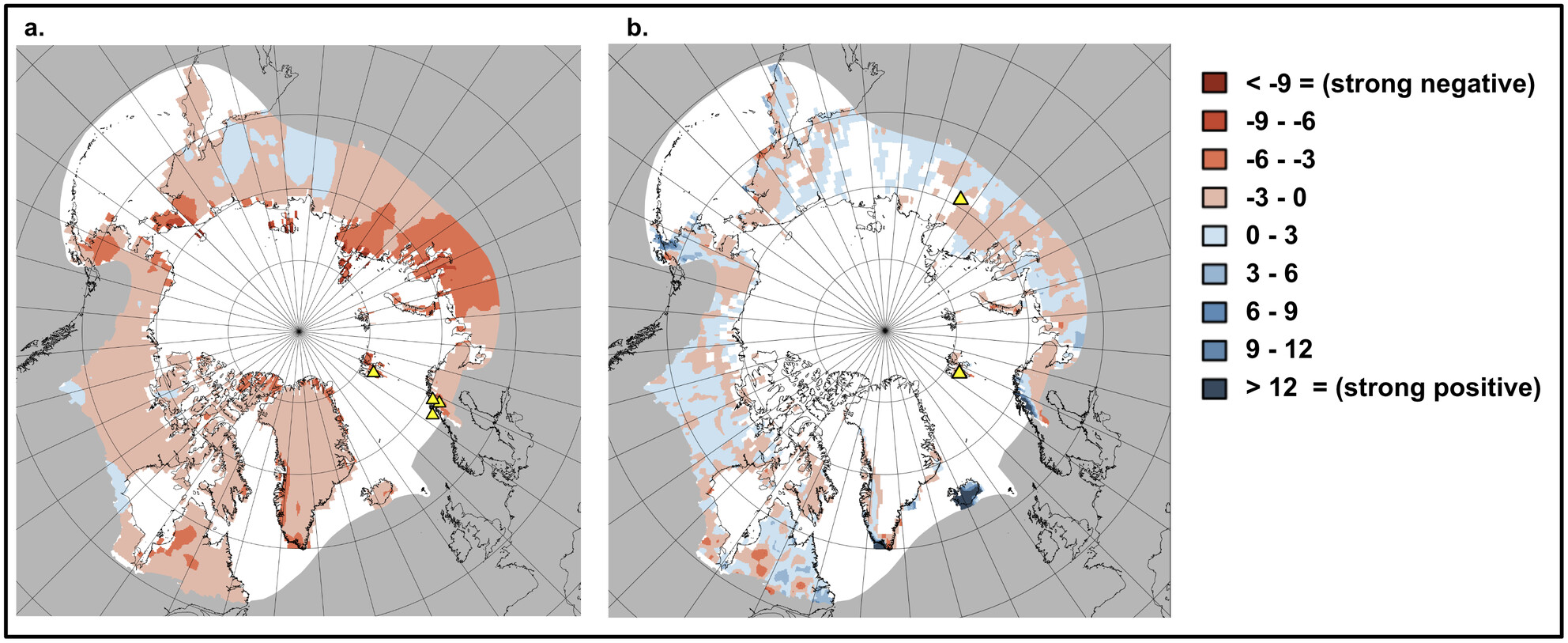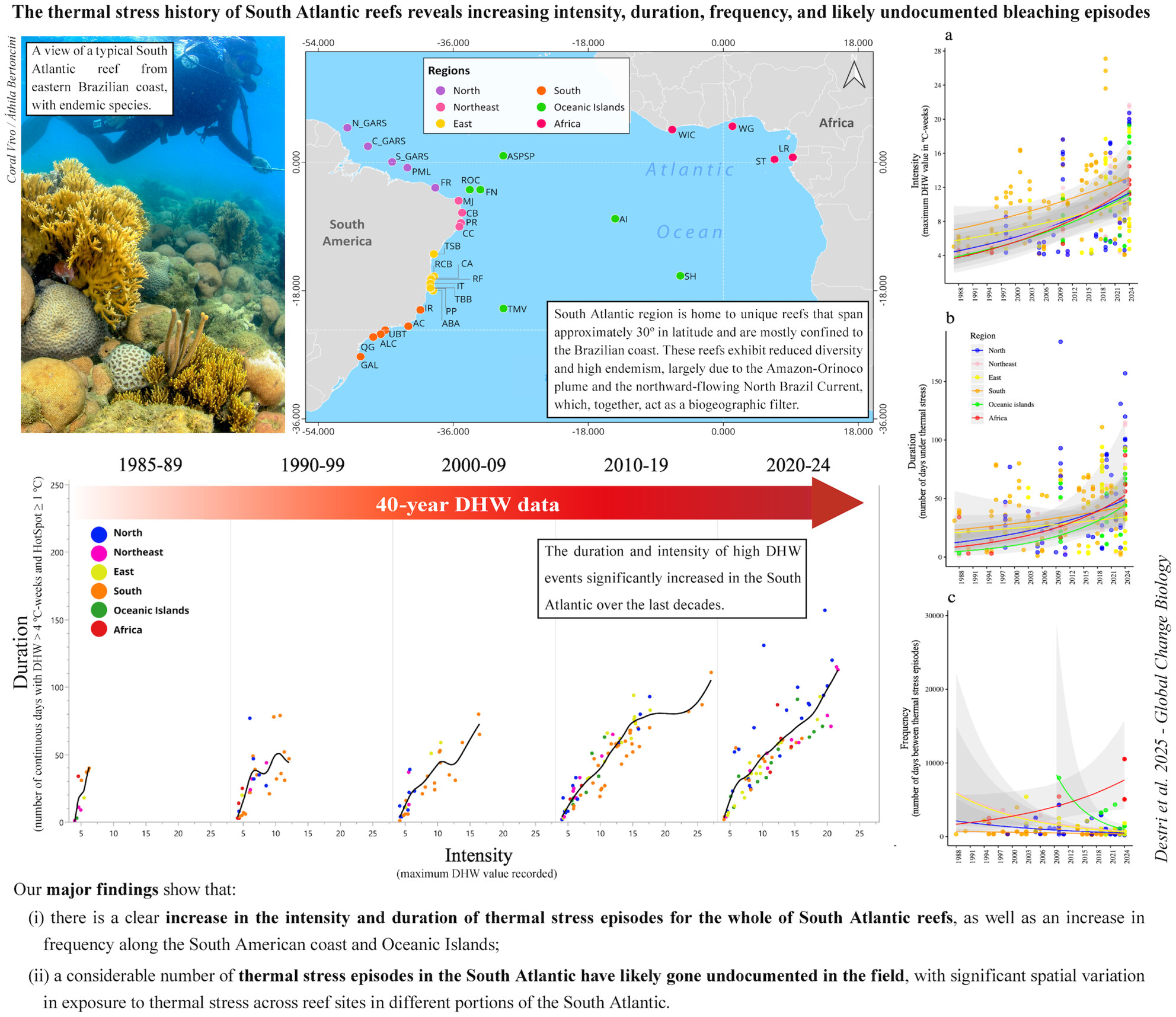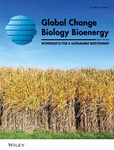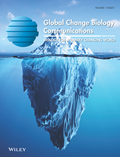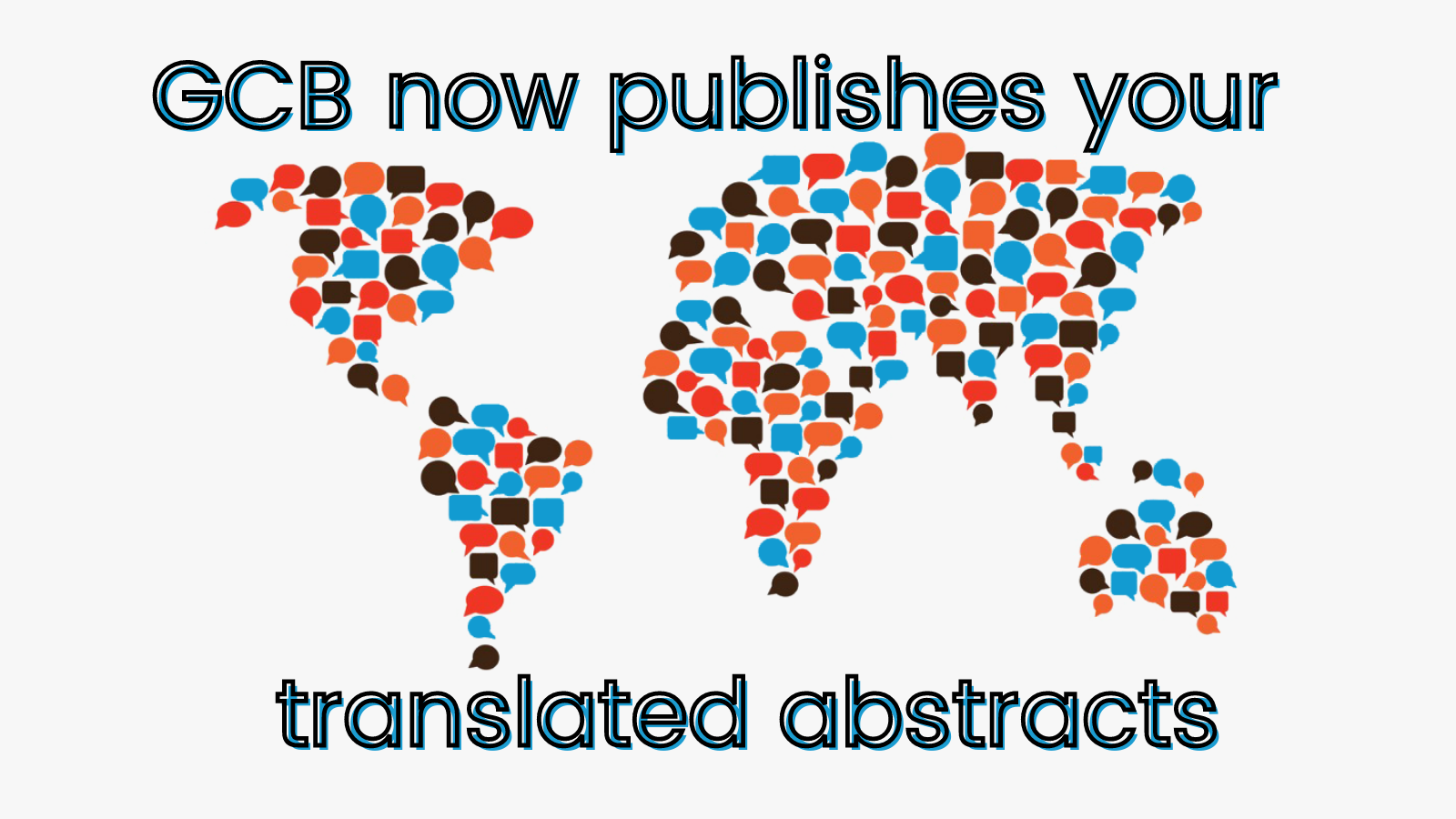Journal list menu
Export Citations
Download PDFs
ISSUE INFORMATION
RESEARCH ARTICLE
Loss of P Fertilizer Effectiveness in Raising Soil P Availability in a Grazed Grassland Enriched With CO2 for 24 Years
- First Published: 05 April 2025
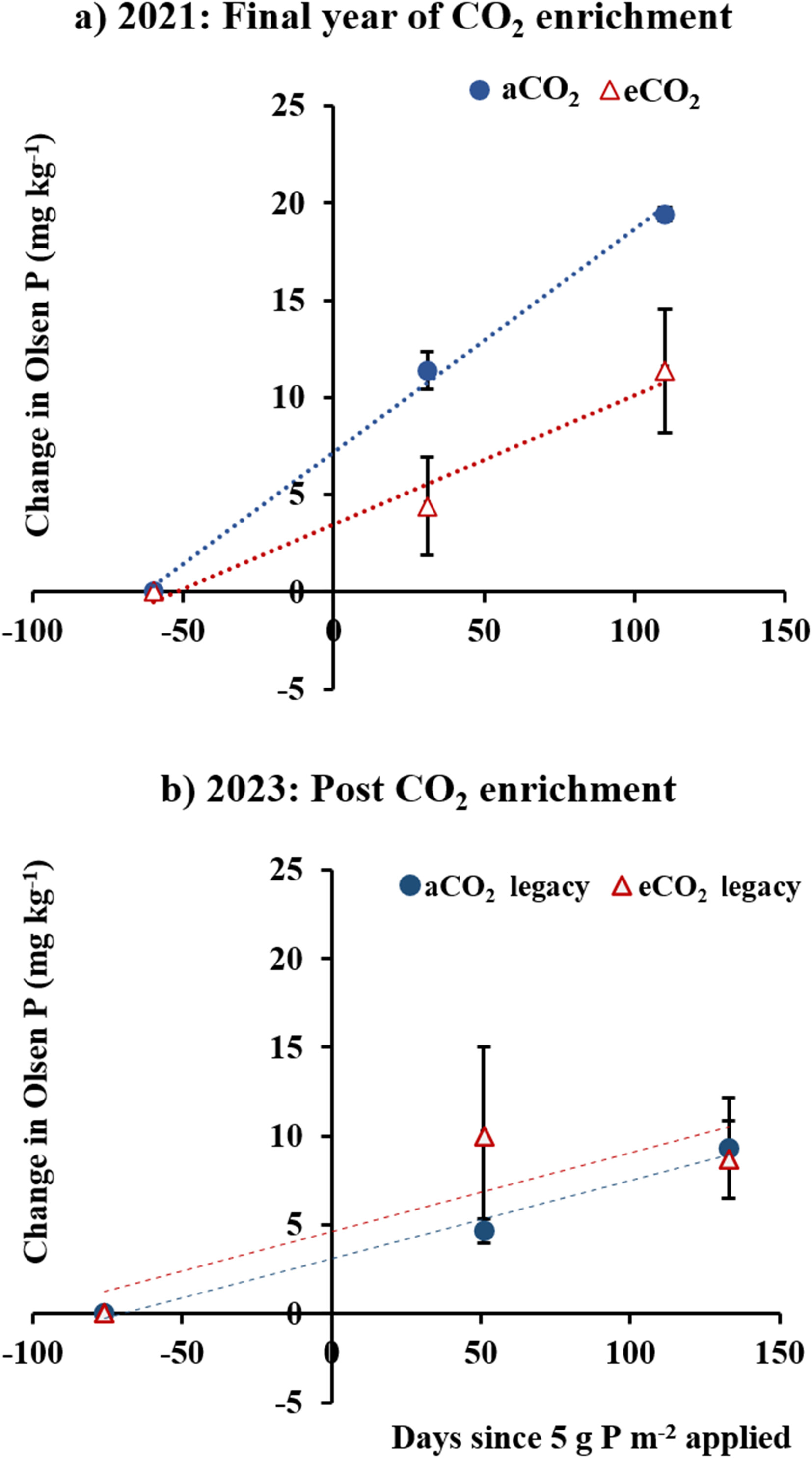
A 24-year dataset from a grazed pasture free-air CO2 enrichment experiment revealed that despite a sustained 27% reduction in Olsen P and a concurrent accumulation of organic P in the topsoil under elevated CO2, pasture P uptake and the growth of P-sensitive legumes increased. Olsen P therefore underestimates true P availability for pasture plants grown under elevated CO2, which could lead to widespread overapplication of P fertilizers as atmospheric CO2 concentrations rise. Soil P test targets should be recalibrated for increasing CO2 concentrations to prevent environmental pollution and ensure efficient use of the finite global P resource.
Mycorrhiza—Saprotroph Interactions and Carbon Cycling in the Rhizosphere
- First Published: 01 April 2025
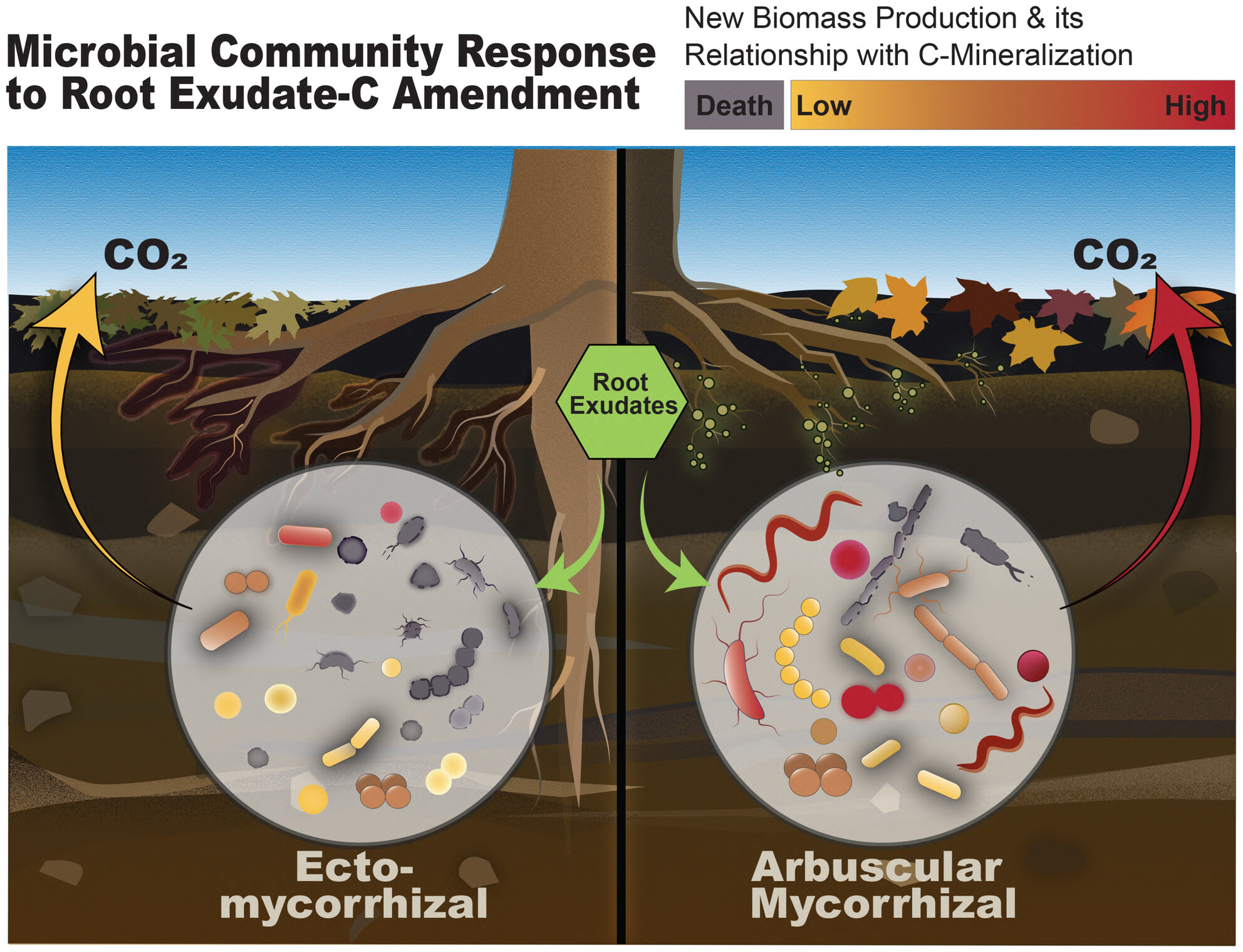
Increasing atmospheric CO2 may enhance rhizosphere exudation, leading to contrasting effects on belowground processes in arbuscular mycorrhizal (AM) and ectomycorrhizal (ECM) ecosystems due to their distinct interactions with bacterial populations. To explore this, 18O–H2O quantitative stable isotope probing was used to measure bacterial growth in response to exudate concentrations in AM- and ECM-associated rhizosphere soils. Exudates enhanced bacterial growth rates and biomass in AM soils, whereas ECM soils exhibited weaker responses and higher microbial mortality. These findings highlight distinct belowground responses to elevated exudation in AM and ECM rhizosphere soils, which may have implications for ecosystem carbon cycling.
Field Experiments and a Meta-Analysis Reveal a Minor Influence of Nitrogen Addition on Phosphorus Fractions in Forests
- First Published: 16 April 2025
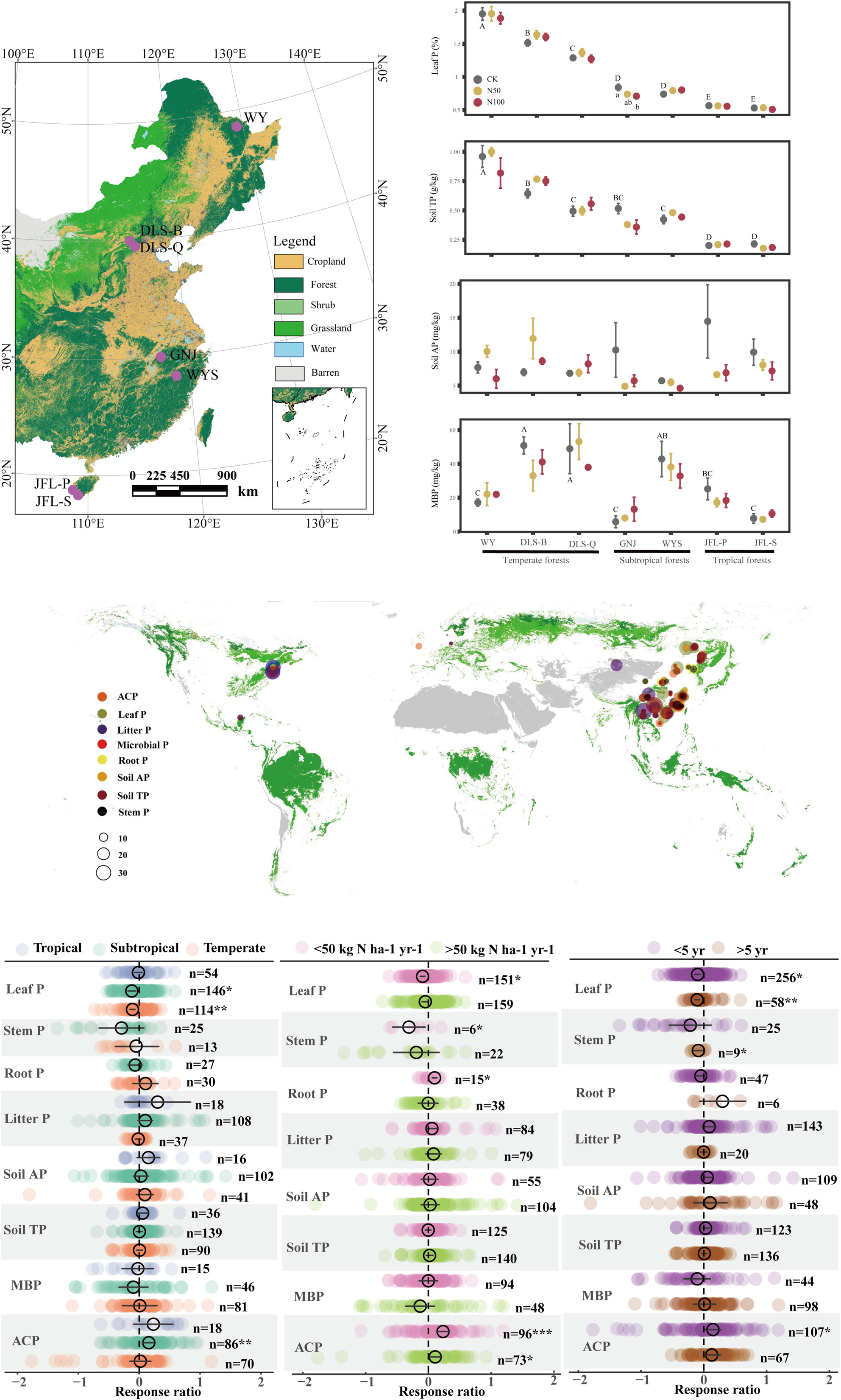
The intensification of nitrogen (N) deposition resulting from increasing human activities has a notable impact on terrestrial phosphorus (P) cycling processes. In our study, we integrated a decade-long experiment on N addition with a comprehensive meta-analysis of global field studies on N addition to investigate the effects of N addition on various P fractions within forest ecosystems. Our findings revealed that the P cycling processes in these ecosystems remain largely resilient to N inputs.
Increases in Arctic Extreme Climatic Events Are Linked to Negative Fitness Effects on the Local Biota
- First Published: 01 April 2025
OPINION
Transdisciplinary Collaborations for Advancing Sustainable and Resilient Agricultural Systems
- First Published: 08 April 2025
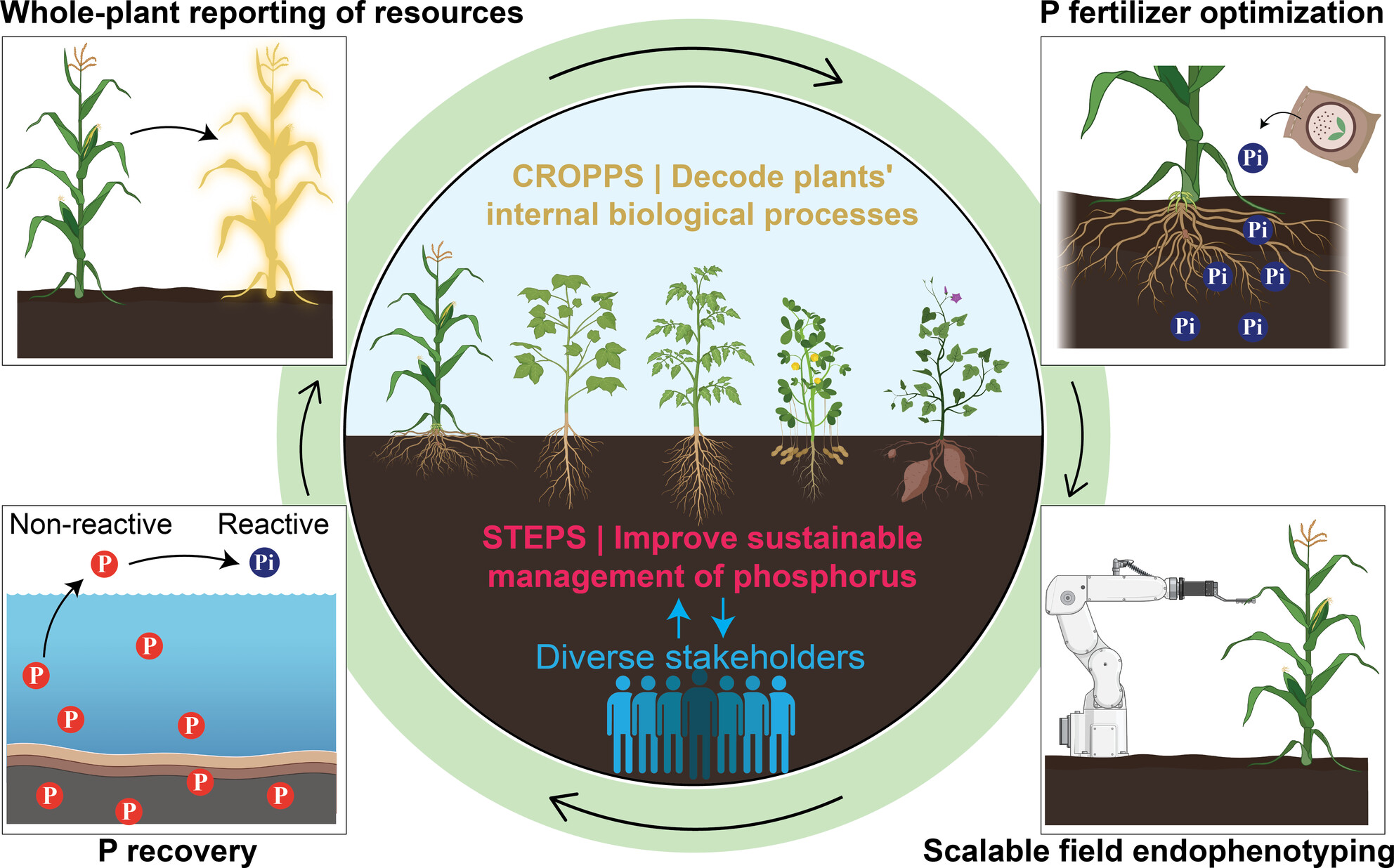
This article explores how transdisciplinary research can address the challenge of feeding a growing population sustainably amid climate change. It presents five case studies demonstrating how collaboration between plant science, engineering, and social sciences can improve water and fertilizer use, from whole-plant signaling to phosphorus recovery and stakeholder engagement.
RESEARCH ARTICLE
Increased Soil Nitrogen Availability Suppresses Annual Soil Respiration in Mixed Temperate Forests Regardless of Acidification
- First Published: 02 April 2025
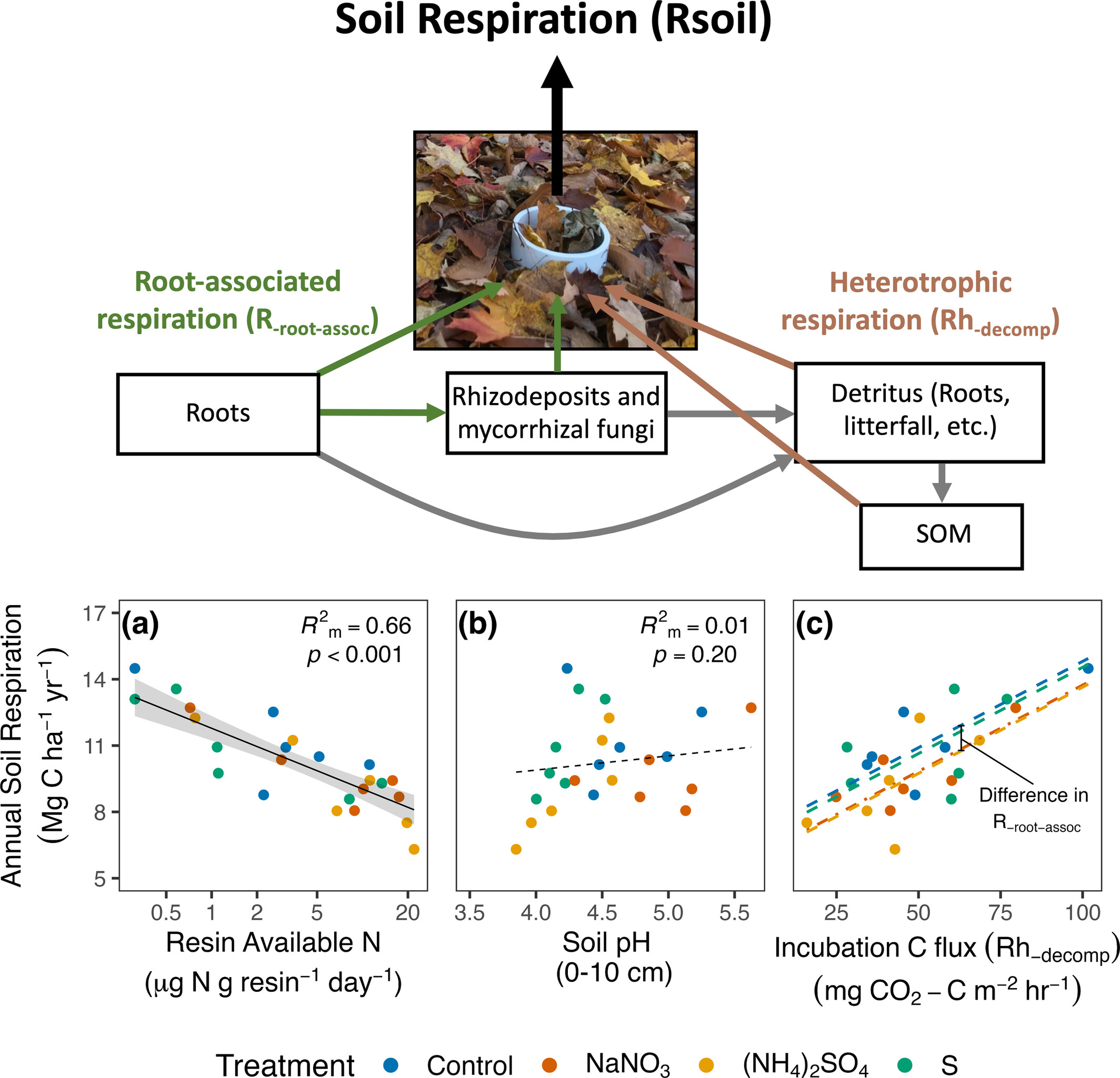
We investigated how soil nitrogen availability and acidity independently or interactively affect soil respiration (Rsoil) and its plant-associated (R-root-assoc) and decomposer-driven (Rh) component fluxes in mixed temperate forests in central New York, USA. Experimentally increased soil nitrogen availability reduced Rsoil (−1.8 Mg C ha−1 year−1) by suppressing both R-root-assoc (~1.1 Mg C ha−1 year−1) and Rh-driven (~0.7 Mg C ha−1 year−1) contributions to Rsoil, while acidification had no effect on Rsoil but suppressed Rh in surface soils. Our findings demonstrate that soil N availability, not soil pH, is the predominant biogeochemical control over Rsoil in these temperate forests.
Urbanization Pressures on Climate Adaptation Capacity of Forest Habitats
- First Published: 04 April 2025
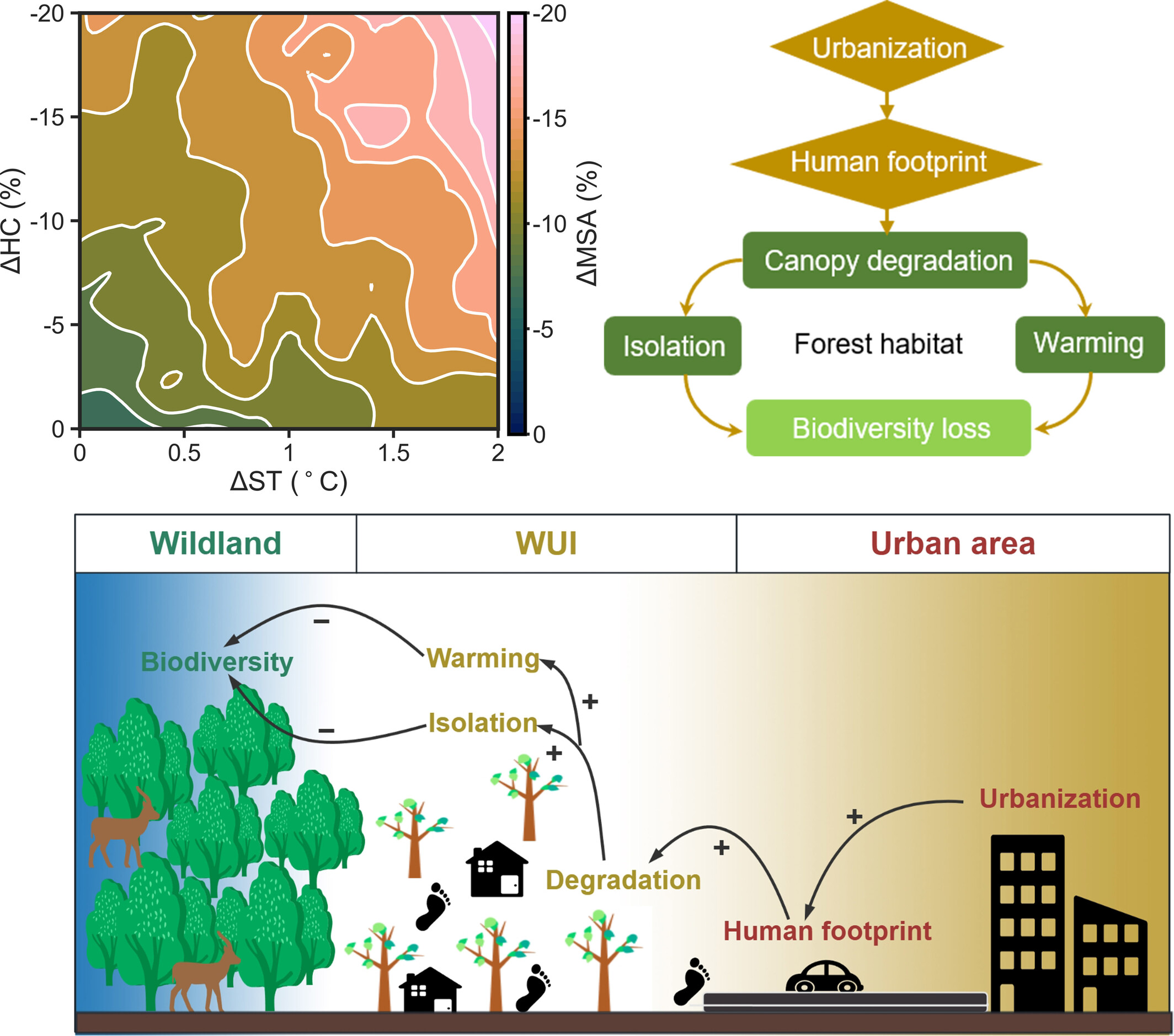
Urbanization extensively shapes wildland–urban interfaces (WUIs), yet its impact on forest habitats within these regions, particularly their role as thermal refuges for biodiversity, remains unclear. Here, we demonstrated that urbanization-induced increases in human footprints cause canopy degradation of forest habitats in WUIs, driving a shift in these habitats toward more isolated and warmer conditions, thereby reducing the local biodiversity. We highlight the need for urban planning to fully integrate solutions for climate adaptation and biodiversity conservation.
The Thermal Stress History of South Atlantic Reefs Reveals Increasing Intensity, Duration, Frequency, and Likely Undocumented Bleaching Episodes
- First Published: 04 April 2025
Inorganic Carbon Should Be Considered for Carbon Sequestration in Agricultural Soils
- First Published: 04 April 2025
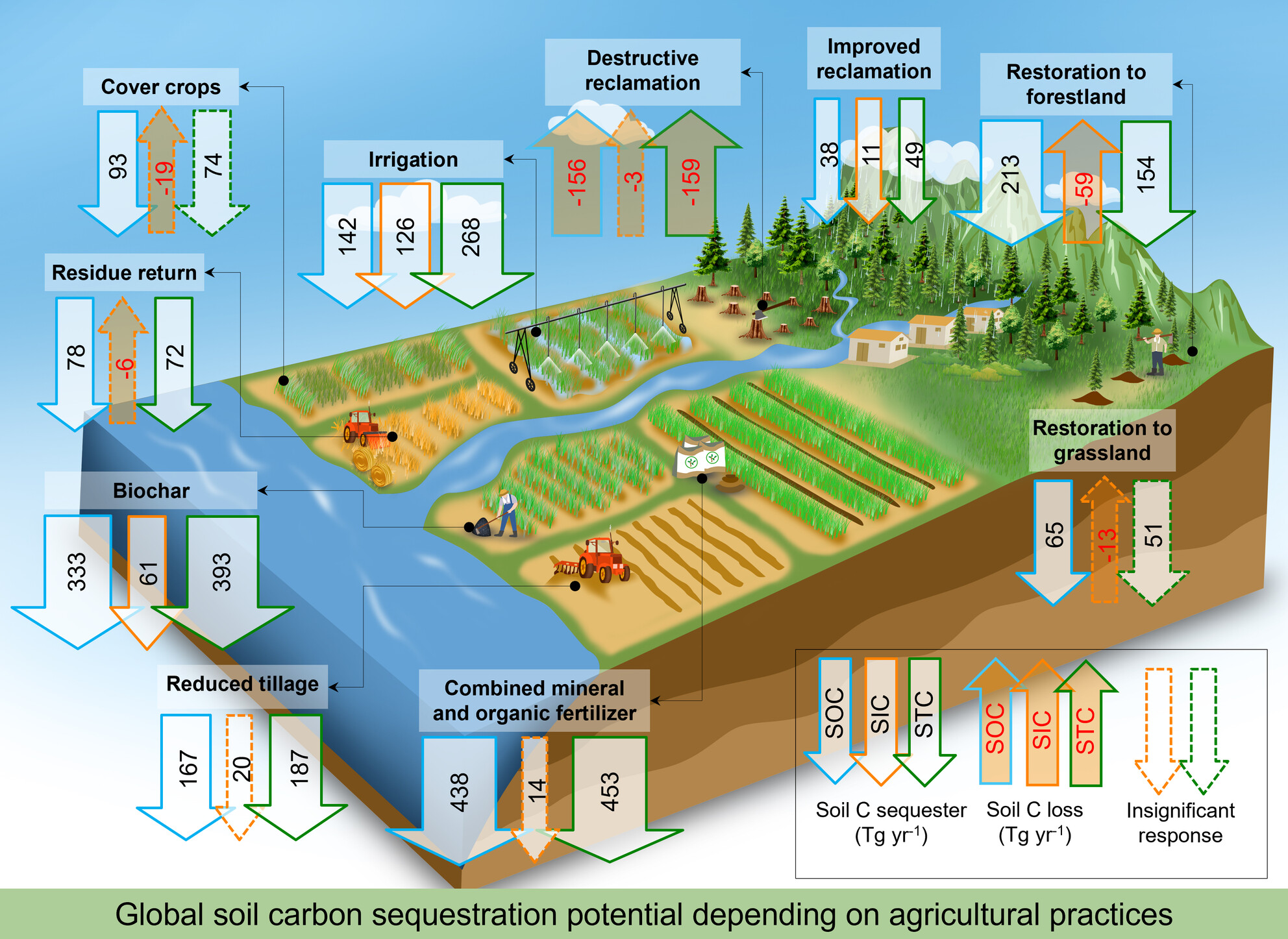
Ignored changes in inorganic carbon stocks may partly offset soil carbon sequestration. Through meta-analysis, we found that soil organic and inorganic carbon increase synergistically by irrigation, biochar application, and improved reclamation, while mineral fertilization and restoration to forestland resulted in a “trade-off” between organic and inorganic carbon. Strengthening practices that synergistically increase soil organic and inorganic carbon, while minimizing SIC losses, will be crucial to achieving global carbon sequestration goals.
Extreme Rainfall Amplified the Stimulatory Effects of Soil Carbon Availability on N2O Emissions
- First Published: 04 April 2025
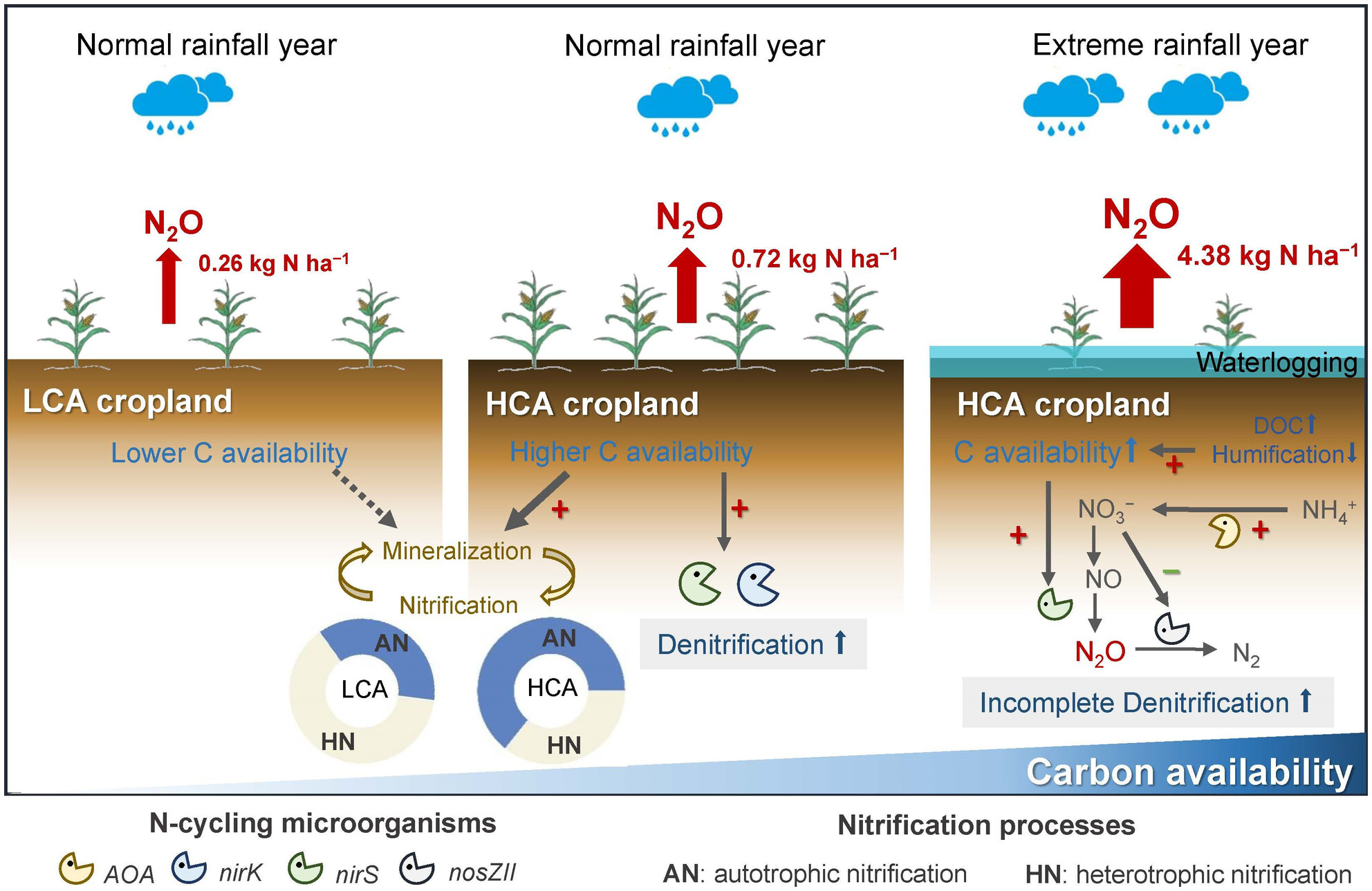
Climate change is expected to increase the frequency and intensity of extreme rainfall, which will dramatically alter soil nitrous oxide emissions, interacting with carbon dynamics under anthropogenic management. Higher soil carbon availability induce larger nitrous oxide emissions mainly due to greater denitrification and mineralization-nitrification coupling process. This stimulation was amplified during the waterlogging period following extreme rainfall events, thereby triggering a surge in nitrous oxide emissions. The stimulated nitrous oxide pulses will have further consequences for greenhouse gas inventories, thus strengthening the positive feedback on climate change.
Patterns of Adaptation to Drought in Quercus robur Populations in Central European Temperate Forests
- First Published: 03 April 2025
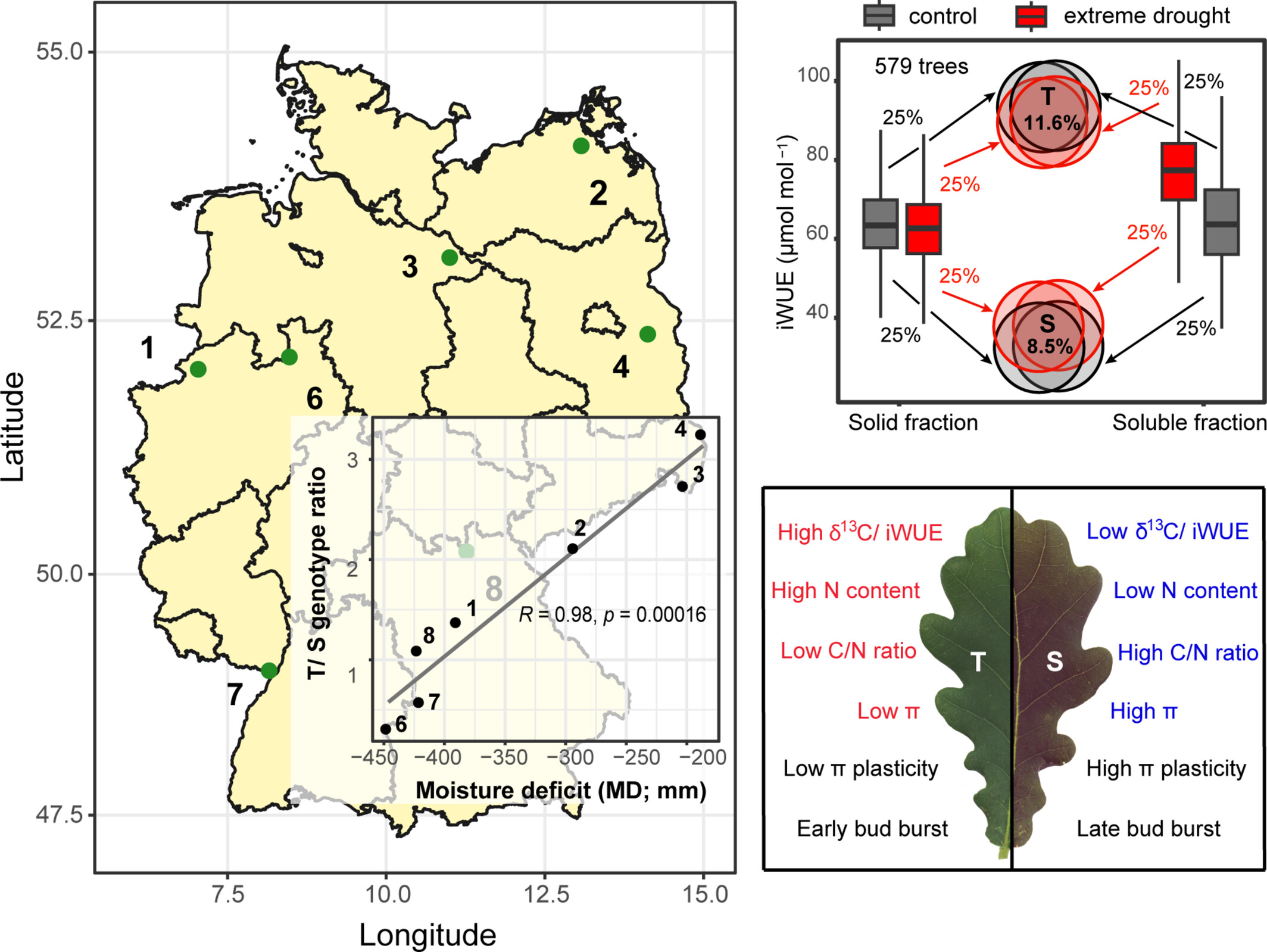
We examined drought tolerance of pedunculate oak from German populations. Our results show that trees from drier regions have greater drought tolerance, suggesting that they actively adapt to their local environment. Moreover, we observed a link between drought tolerance and the timing of spring bud burst, suggesting that adaptation to water stress may be evolving alongside seasonal shifts in tree development—another major consequence of climate change. These adaptations are driven by current environmental conditions, but do not reflect the pattern of post-glacial recolonization. Our results suggest that pedunculate oak has strong potential to withstand future climate challenges.
OPINION
Microbiomes as Modulators of Human and Planetary Health: A Relational and Cross-Scale Perspective
- First Published: 03 April 2025
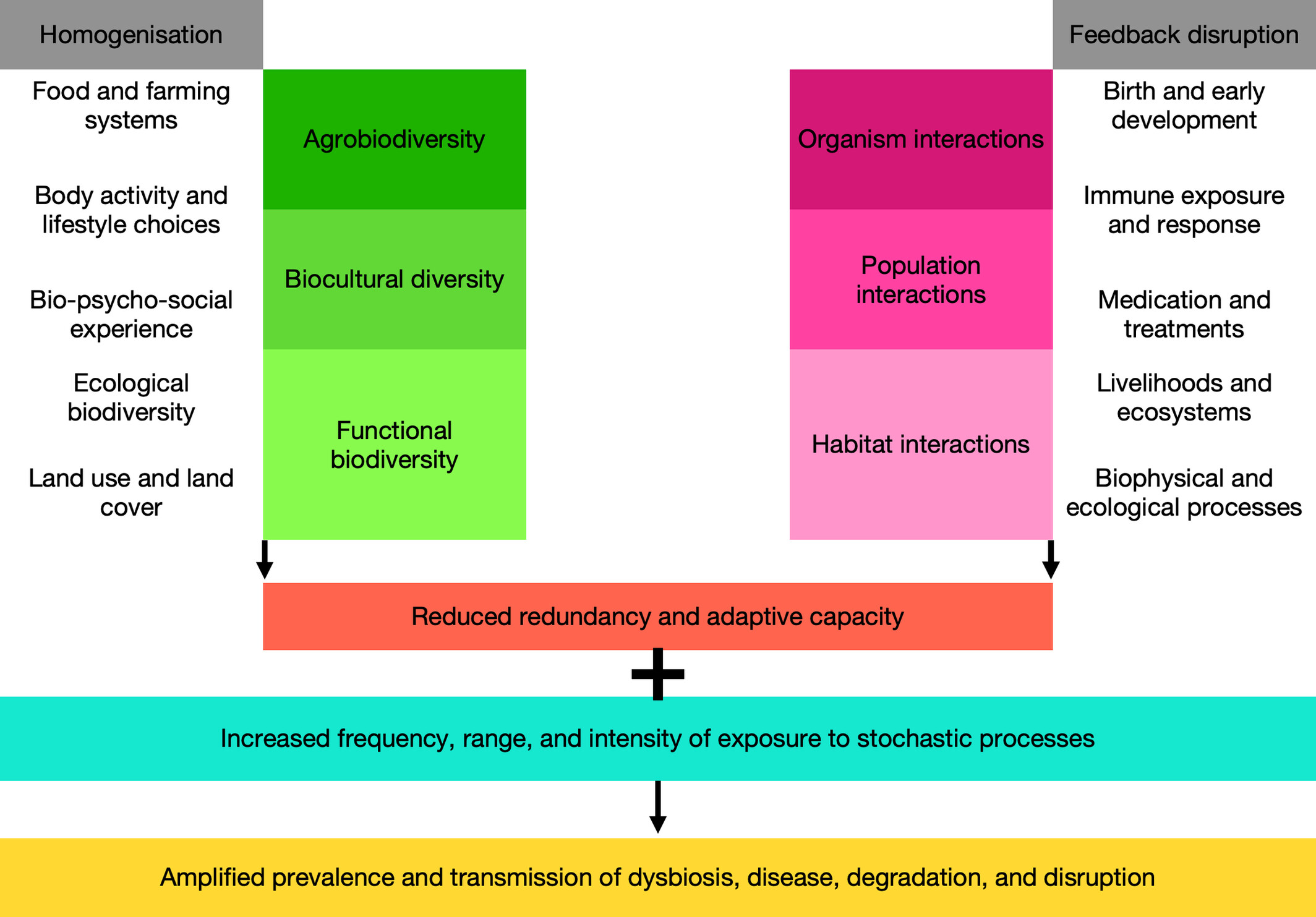
The biological diversity of the human microbiome can be considered analogous to ecological diversity, and environmental change impacts this biodiversity in interconnected ways from micro- to macro- level. Holistic approaches using a microbiodiversity lens can have multiple benefits for human health and well-being as well as environmental health and safety. Such approaches will restore connectivity and function in production, growth, development, and regulation of social-ecological-economic systems.
RESEARCH ARTICLE
Tundra Plant Canopies Gradually Close Over Three Decades While Cryptogams Persist
- First Published: 21 April 2025
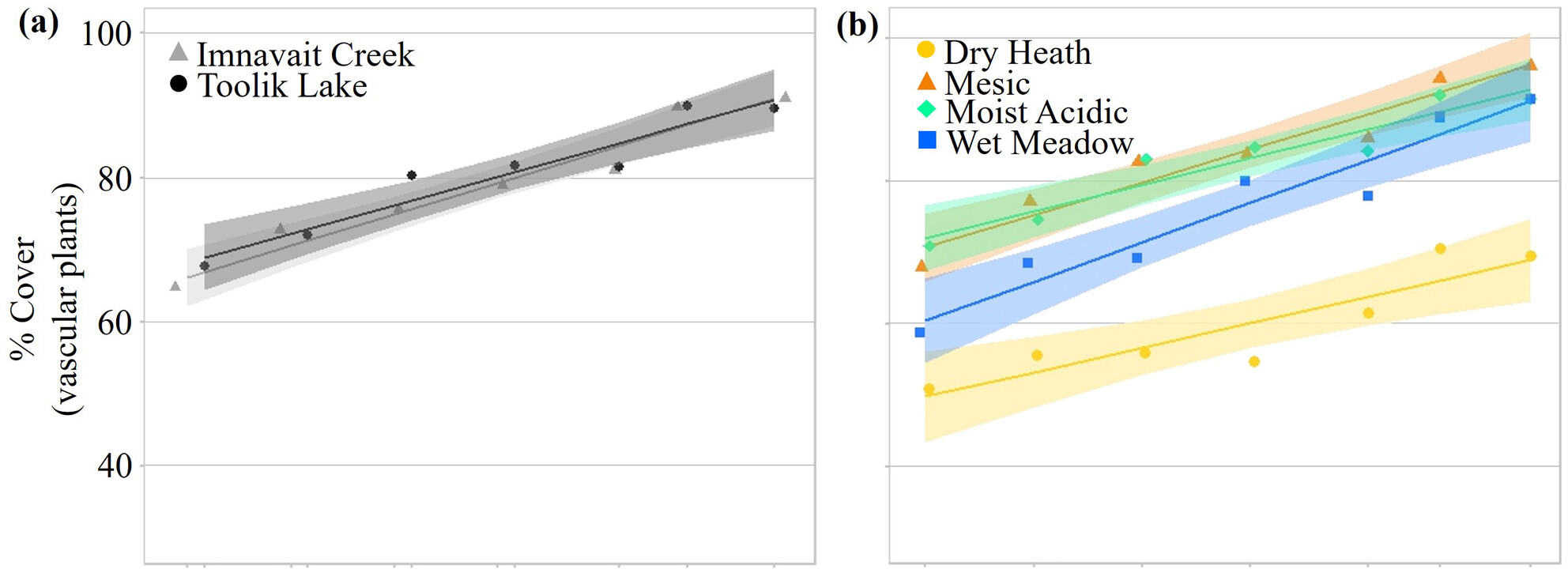
Two sites in northern Alaska representative of the circumpolar tundra biome were periodically sampled over more than three decades. Plant canopies both grew taller and increased in complexity while mosses and lichens persisted. It is important to understand how plant communities are changing in a rapidly warming biome.
Soil Acidification Destabilizes Terrestrial Ecosystems via Decoupling Soil Microbiome
- First Published: 04 April 2025
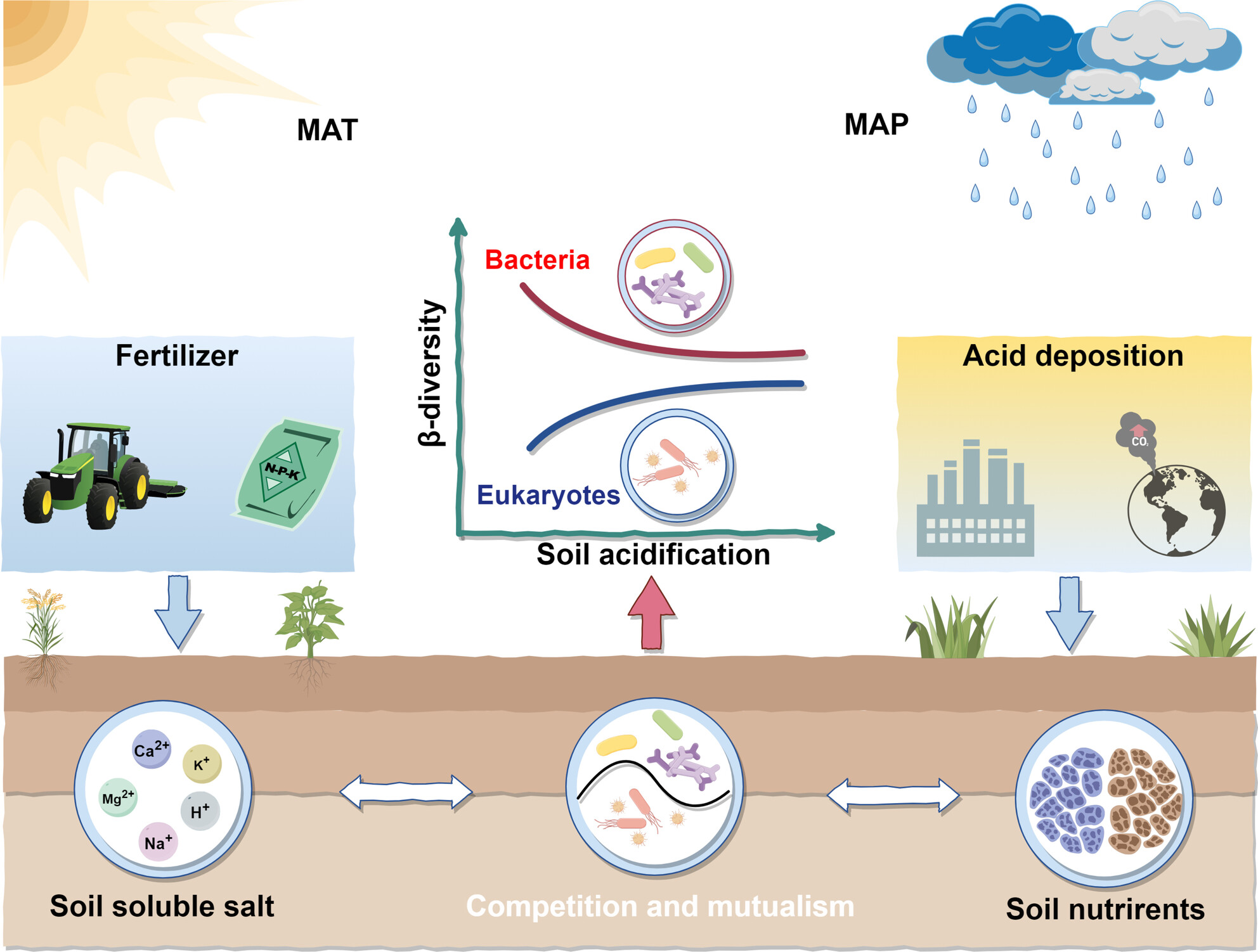
Soil microbiomes are crucial for sustaining ecosystems, yet their diversity patterns under environmental changes remain poorly understood. Analyzing samples across six Chinese ecosystems, this study found that lower soil pH reduces bacterial diversity (making communities more similar) while increasing eukaryotic diversity (making them more distinct), with heightened competition and community restructuring. These findings highlight soil pH as a key regulator of microbial dynamics under global changes, emphasizing its critical role in biodiversity conservation strategies for protected areas worldwide.
CORRECTION
Correction to “A cloudy forecast for species distribution models: Predictive uncertainties abound for California birds after a century of climate and land-use change”
- First Published: 07 April 2025
INVITED COMMENTARY
Don't Miss the Forest for the Trees: How Abstracting Nature Can Get Us Closer to Our Goals
- First Published: 04 April 2025
RESEARCH ARTICLE
Temperature Drives Seagrass Recovery Across the Western North Atlantic
- First Published: 14 April 2025
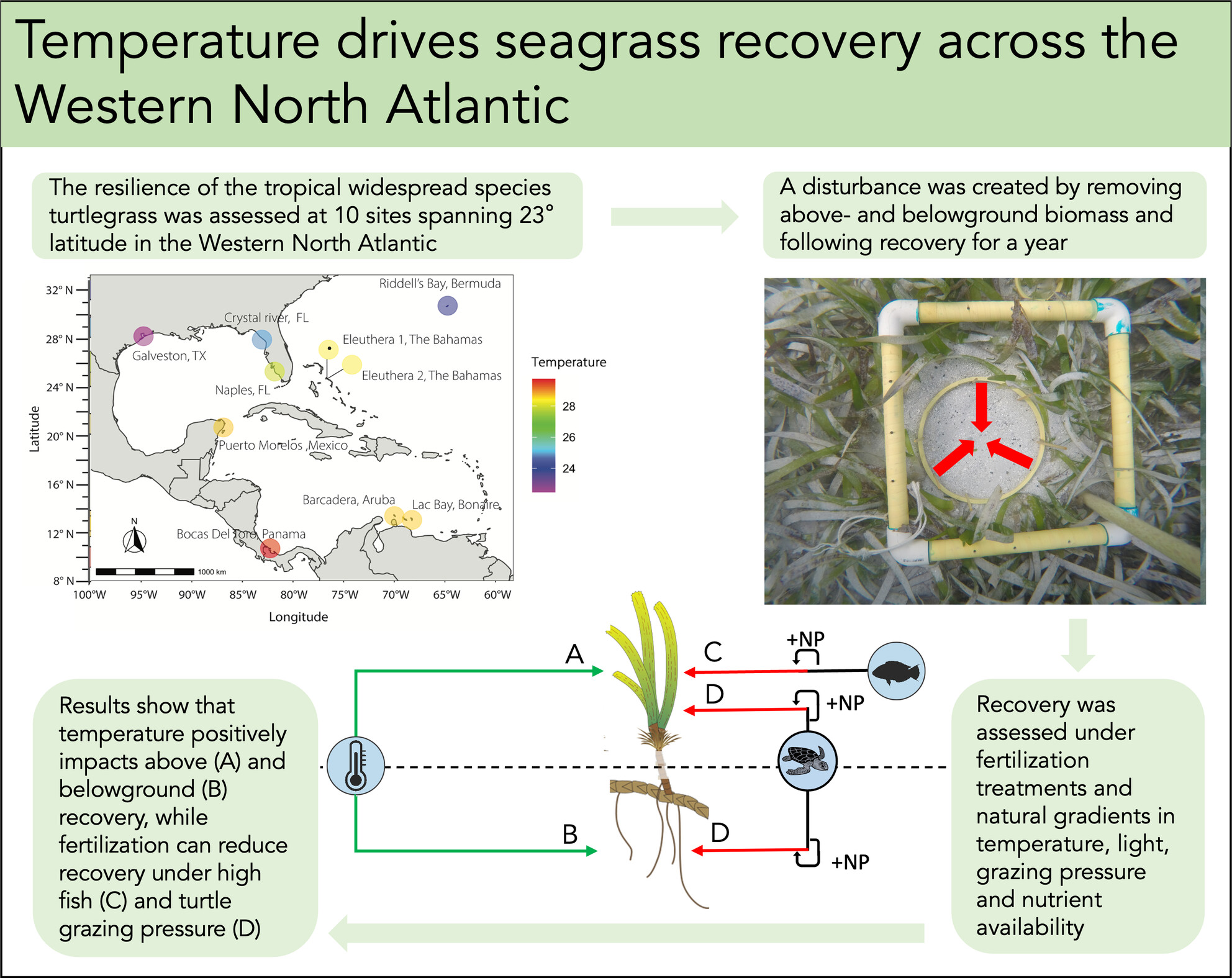
In this study, we used field experiments across 23° of latitude (from Bermuda to Panama) to investigate how important climate change drivers impact the recovery rates of turtlegrass, a widespread marine plant. We found that both global (temperature) and local (grazing and nutrients) drivers affect seagrass recovery rates and thus resilience. Warming increased seagrass resilience, which leads to our conclusion that seagrasses living at their cooler range boundary may benefit from global warming. However, both nutrients and grazing pressure should be closely monitored as they can interact to negatively impact seagrass recovery.
Additive Effects of Multiple Global Change Drivers on Terrestrial Nitrogen Cycling Worldwide
- First Published: 03 April 2025
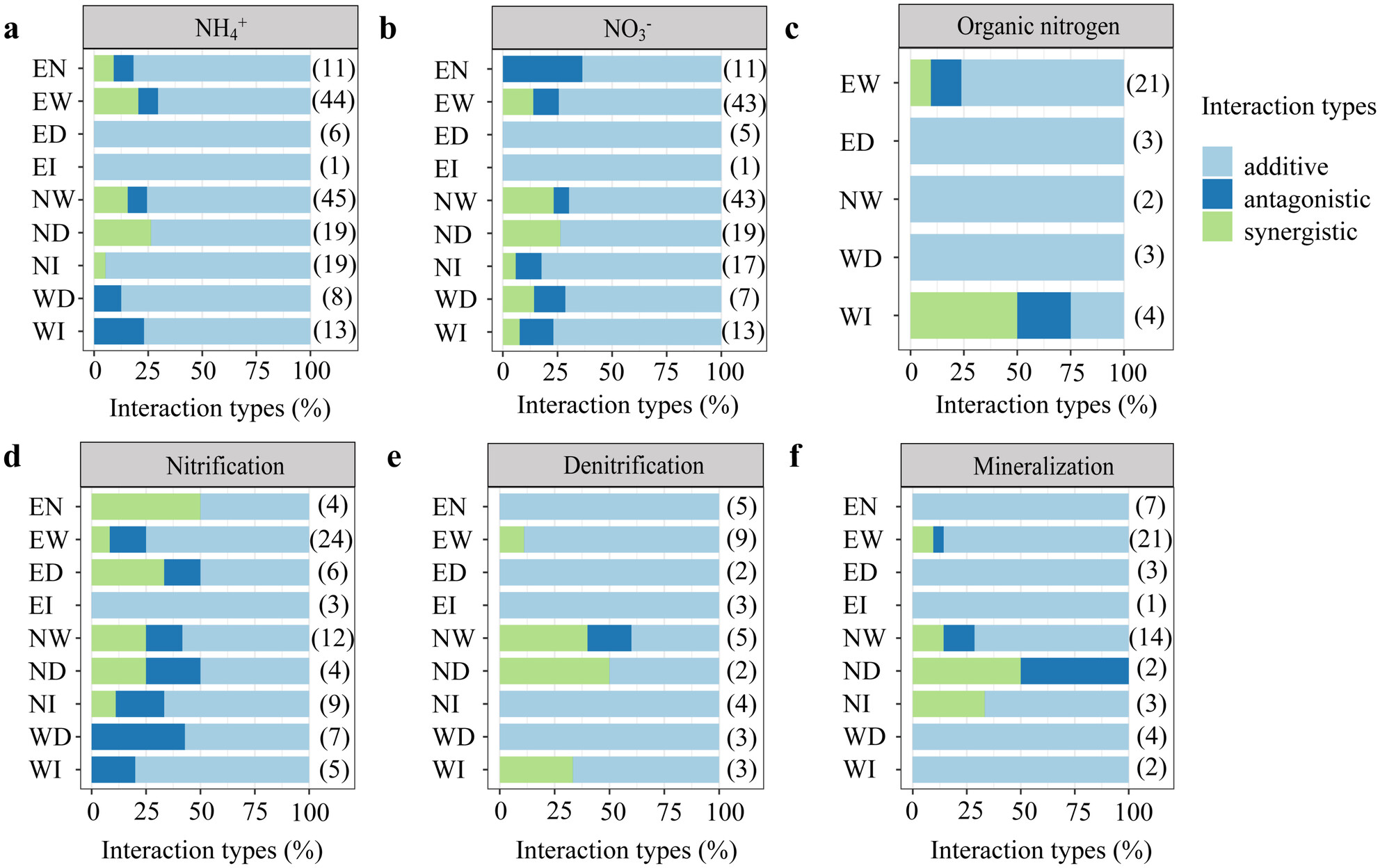
The interactive effects of multiple global change factors (GCFs) on terrestrial nitrogen (N) cycling worldwide remain unclear, limiting the ability to predict how future global change will affect the global N cycle. Our meta-analysis indicated that the interactions of multiple GCFs were commonly additive (66.2%–83.3%), but both synergistic (10.5%–15.1%) and antagonistic (2.8%–18.9%) effects were also observed. Treatment types, ecosystems, geography, and climate influenced soil N pool responses to some extent, while only treatment types and ecosystems significantly affected soil transformation rates.
Novel Regimes of Extreme Climatic Events Trigger Negative Population Rates in a Common Insect
- First Published: 07 April 2025
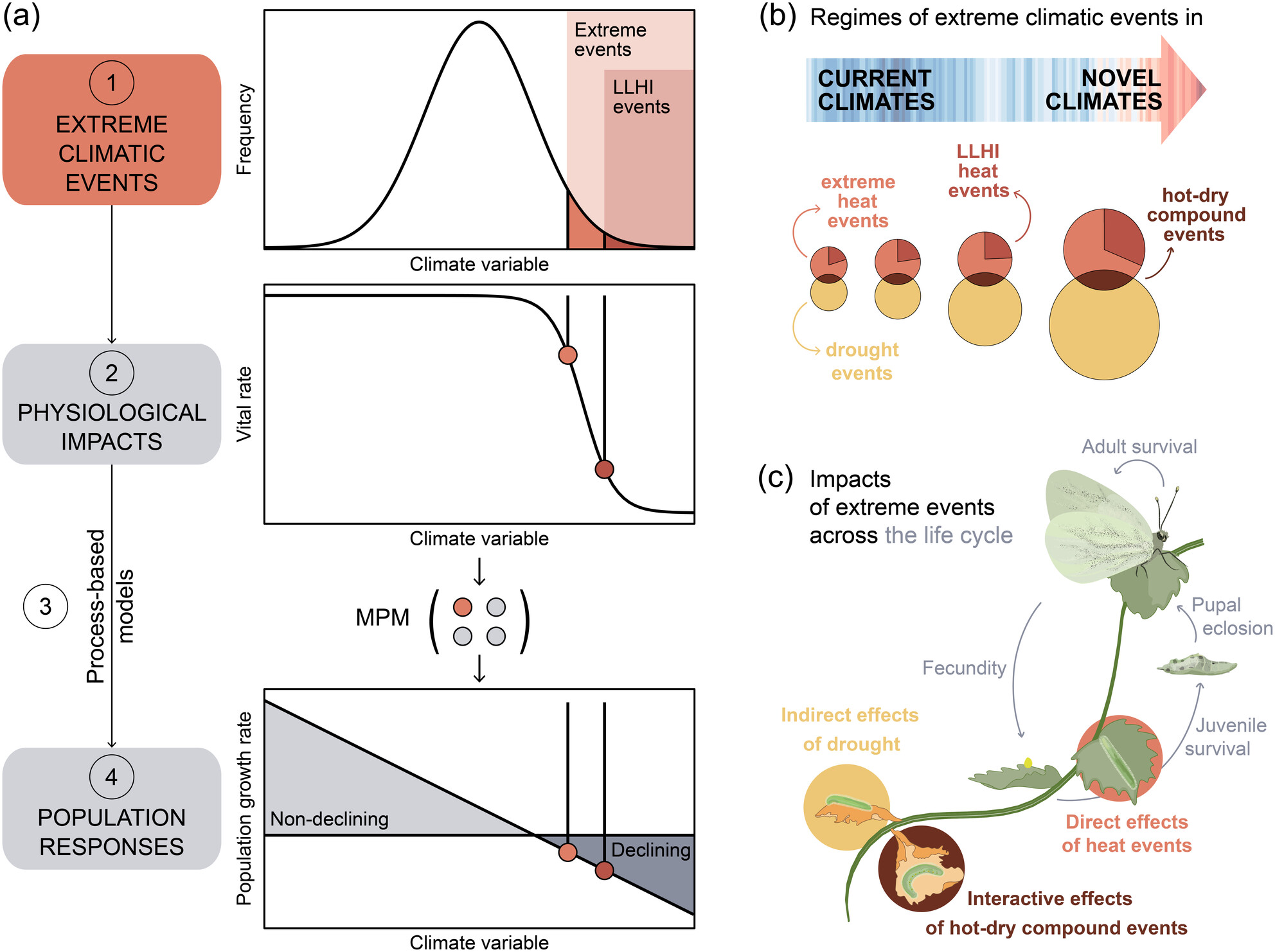
We built a model that simulates the green-veined white butterfly population dynamics based on the survival and fecundity rates of the species across its life cycle and the effects of extreme heat and drought events. We projected the model in different climatic scenarios and found that novel climatic regimes characterised by a larger share of the rarest and most impactful extreme events will trigger widespread declines in the species. Our results suggest that in future scenarios not meeting the Paris Agreement, these currently rare events could emerge as a critical new —but overlooked— driver of the declines in insect populations.
Multiple Models of European Marine Fish Stocks: Regional Winners and Losers in a Future Climate
- First Published: 03 April 2025
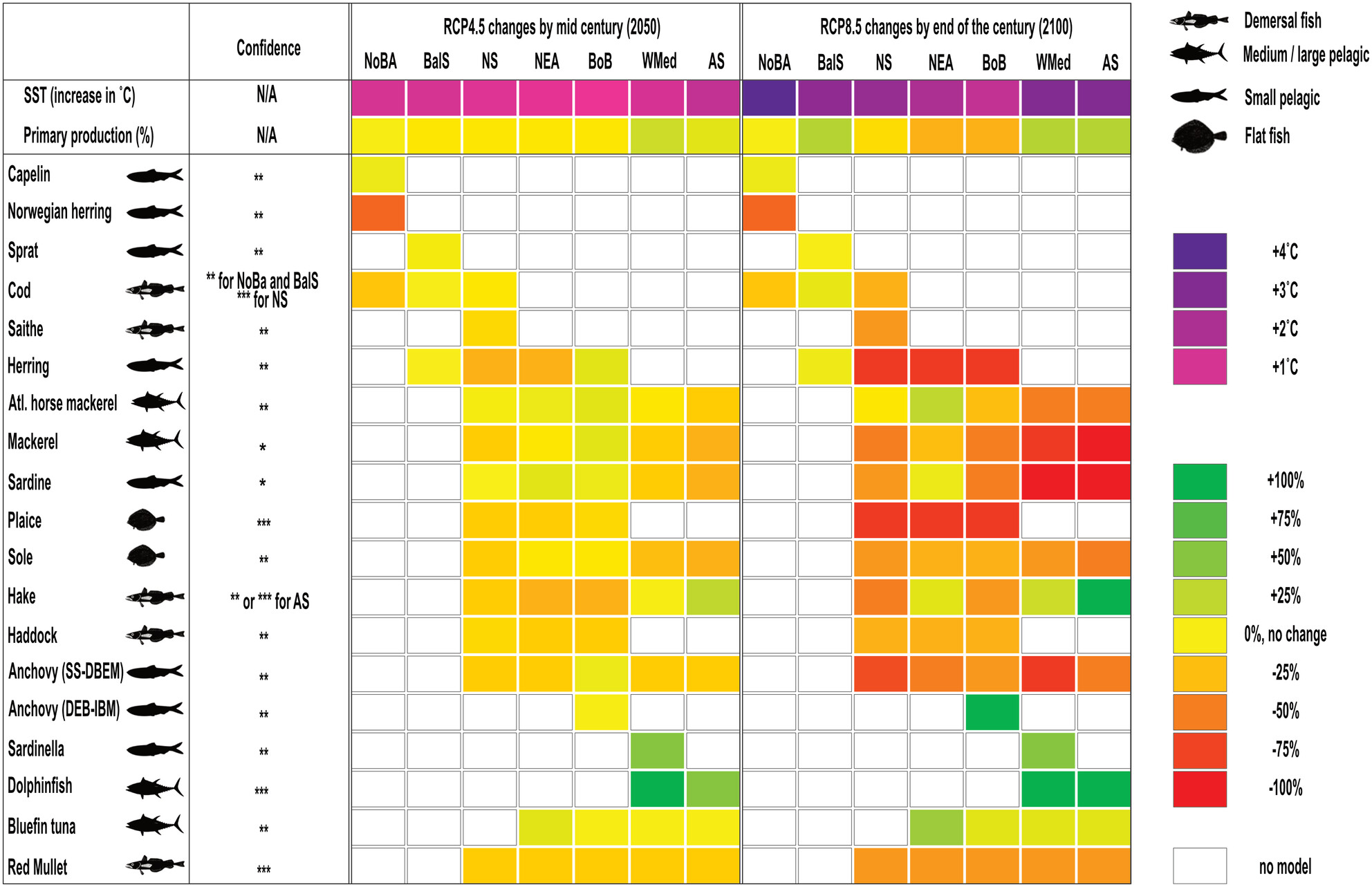
Using state-of-the art models we projected changes for 17 key commercial fish species in the Northeast Atlantic under two climate scenario. Carrying the analysis at the species level and regional scale rather than the usual total biomass approach, we identify “winners and losers” for fish and regional fisheries, highlighting the need for novel approach for climate ready management strategies for marine fish stock.
PERSPECTIVE
Lightning Impacts on Global Forest and Carbon Dynamics: Current Understanding and Knowledge Gaps
- First Published: 07 April 2025
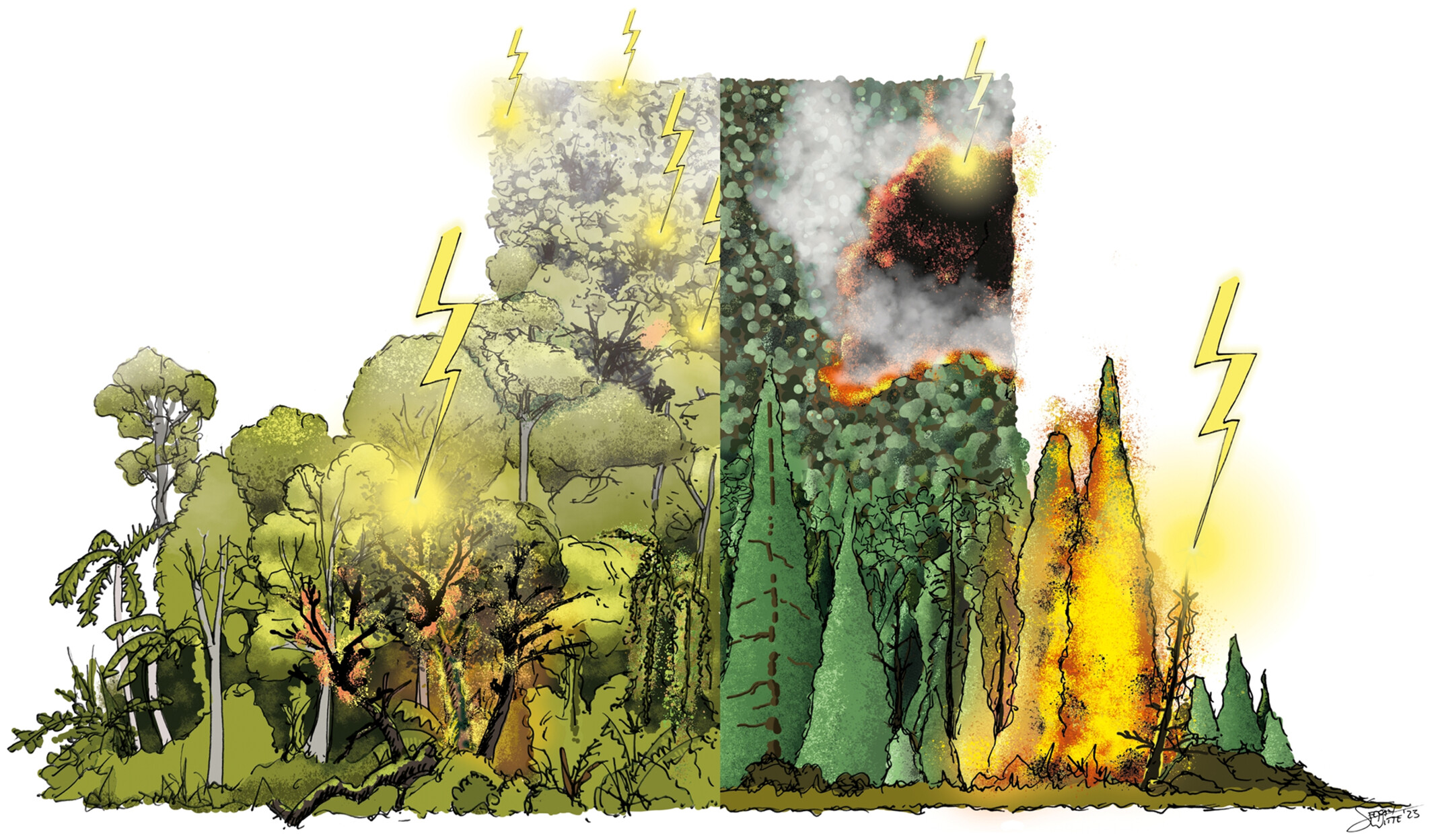
Lightning is a fundamental Earth system process that influences the world's major forest biomes and their carbon storage through two primary pathways. Lightning is the major cause of boreal forest fires, while lightning strikes kill patches of trees in tropical forests. We summarized the current understanding of these processes and identified knowledge gaps.
REVIEW
Chasing the Niche: Escaping Climate Change Threats in Place, Time, and Space
- First Published: 08 April 2025
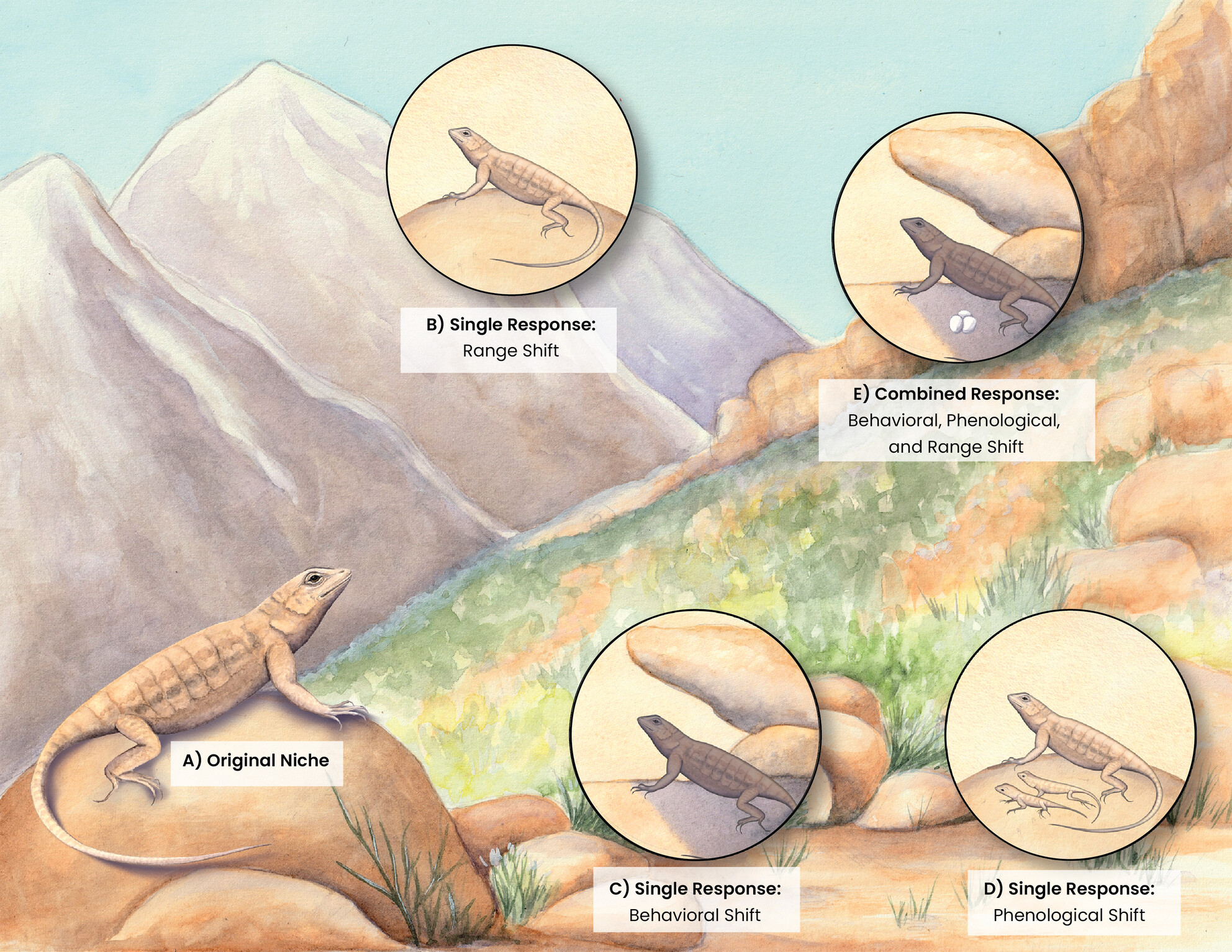
Climate change is creating mismatches between species' current environments and the conditions under which they evolved, which can lead to physiological stresses, lower fitness, and ultimately species extinctions. Changes in behavior, altered phenology, and range shifts represent alternative ecological strategies species can use to realign the conditions individuals experience with their niche. We synthesize the literature on these strategies to identify their potential alignment, the circumstances under which each strategy may be more or less effective, and how different strategies might interact with each other and with evolutionary processes.
RESEARCH ARTICLE
Incorporating Drought Thresholds Improves Model Predictions of Autumn Phenology in Tropical and Subtropical Forests
- First Published: 16 April 2025
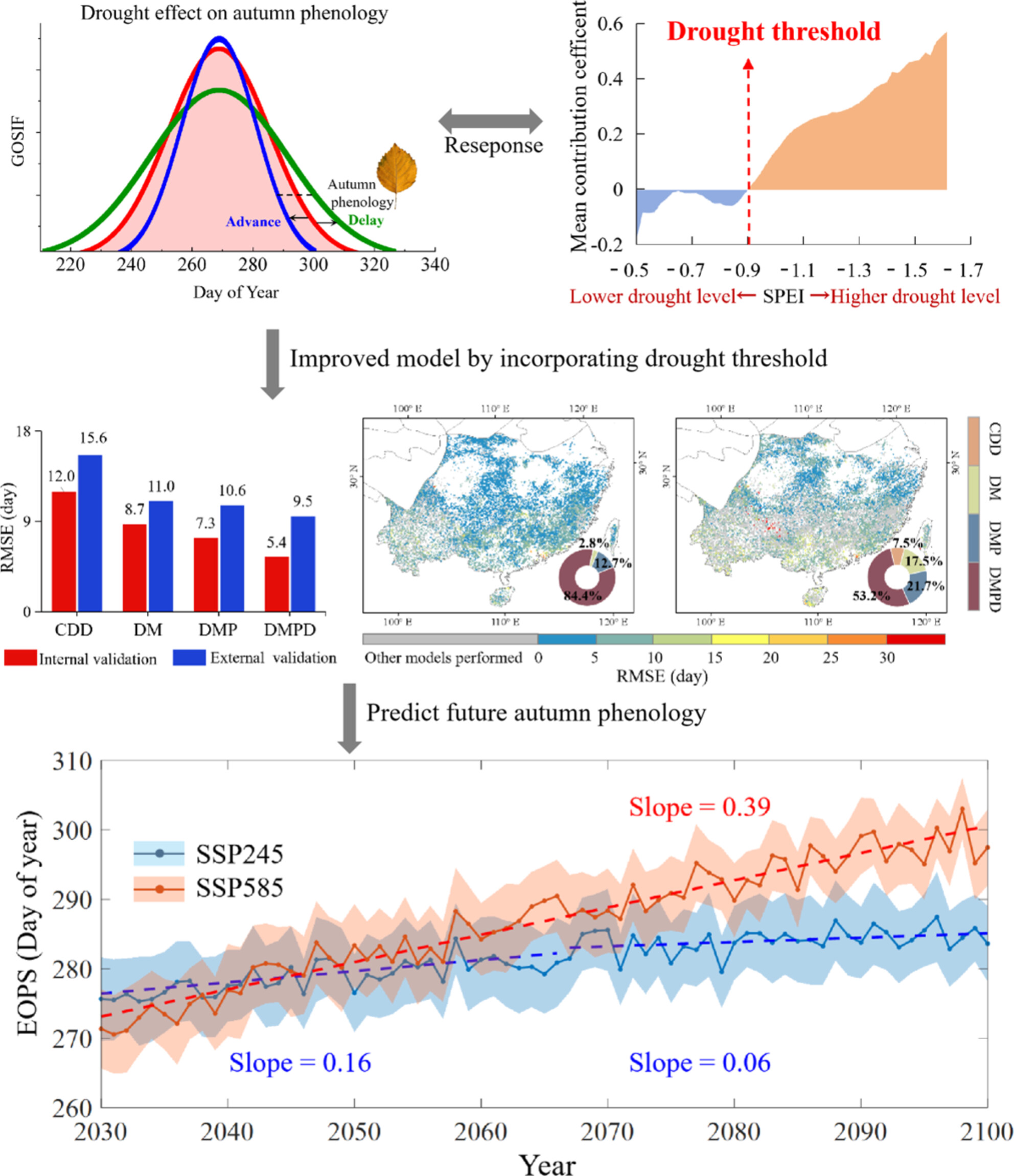
Drought substantially alters autumn phenology, subsequently impacting terrestrial carbon and water balance. We found that when drought intensity surpasses a critical threshold, the response of autumn phenology in tropical and subtropical forests reverses from a delay to an advance. Accordingly, we developed a new autumn phenology model (DMPD) by integrating the drought thresholds, which substantially improves the simulation accuracy of autumn phenology. By the end of the century, autumn phenology will consistently be delayed under both moderate (SSP245) and high (SSP585) warming scenarios, with a deceleration in the rate of delay under SSP245 after 2066.
The Carbon Balance of a Rewetted Minerogenic Peatland Does Not Immediately Resemble That of Natural Mires in Boreal Sweden
- First Published: 08 April 2025
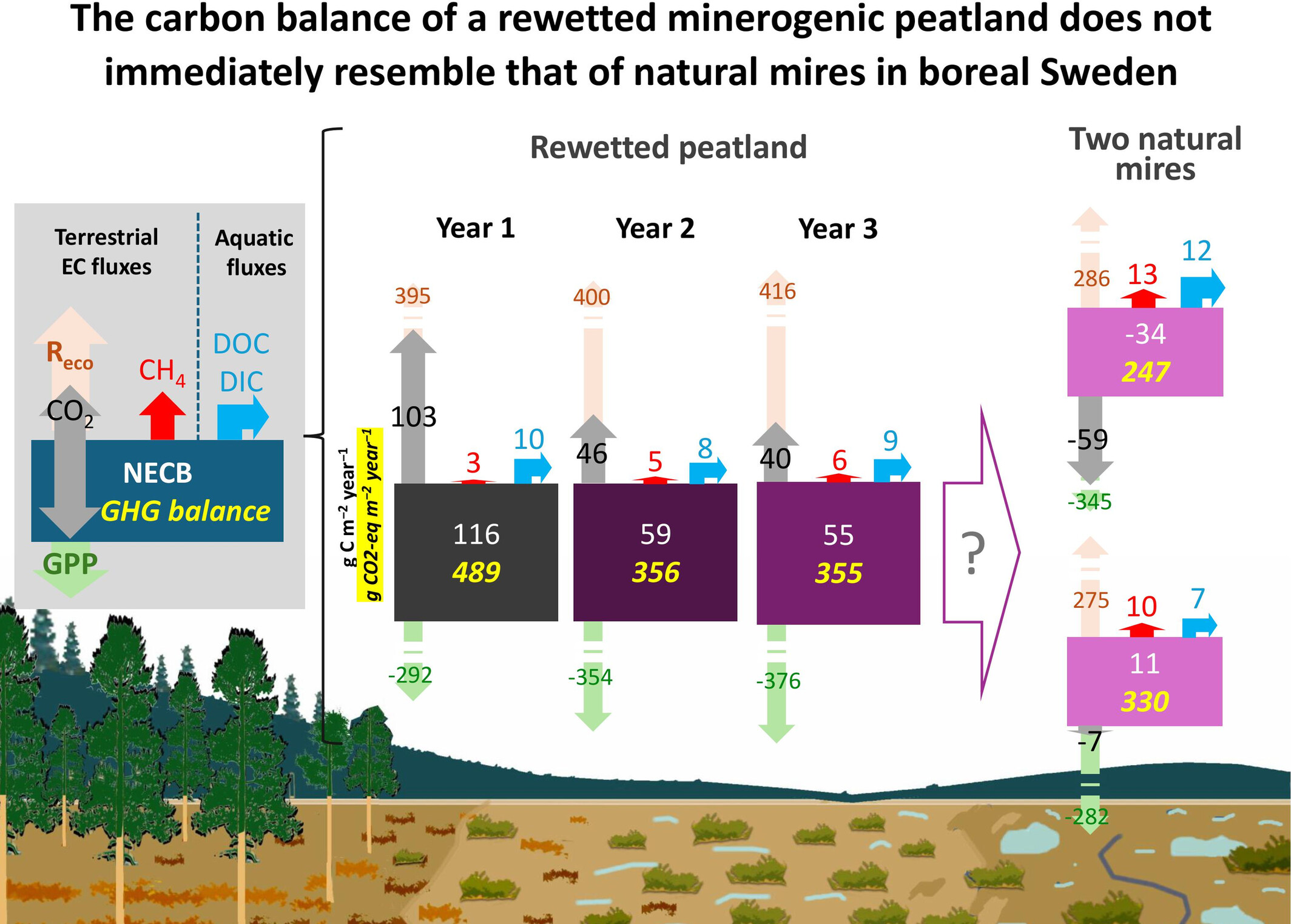
This study assessed the carbon balance of a rewetted minerogenic peatland and two natural mires in northern Sweden using eddy covariance and discharge measurements. During 3 years after ditch-filling, the rewetted site emitted +77 ± 34 g C m−2 year−1, while mires ranged between +11 and −34 g C m−2 year−1. CO2 emissions from the rewetted site decreased by half over the 3 years, while CH4 emissions increased toward 49% of mire levels. Dissolved carbon export differed only in the first year. This highlights the different carbon dynamics of recently rewetted and natural peatlands, calling for dynamic emission factors for rewetted peatlands.
Unravelling Changes in the Pinus radiata Root and Soil Microbiomes as a Function of Aridity
- First Published: 08 April 2025
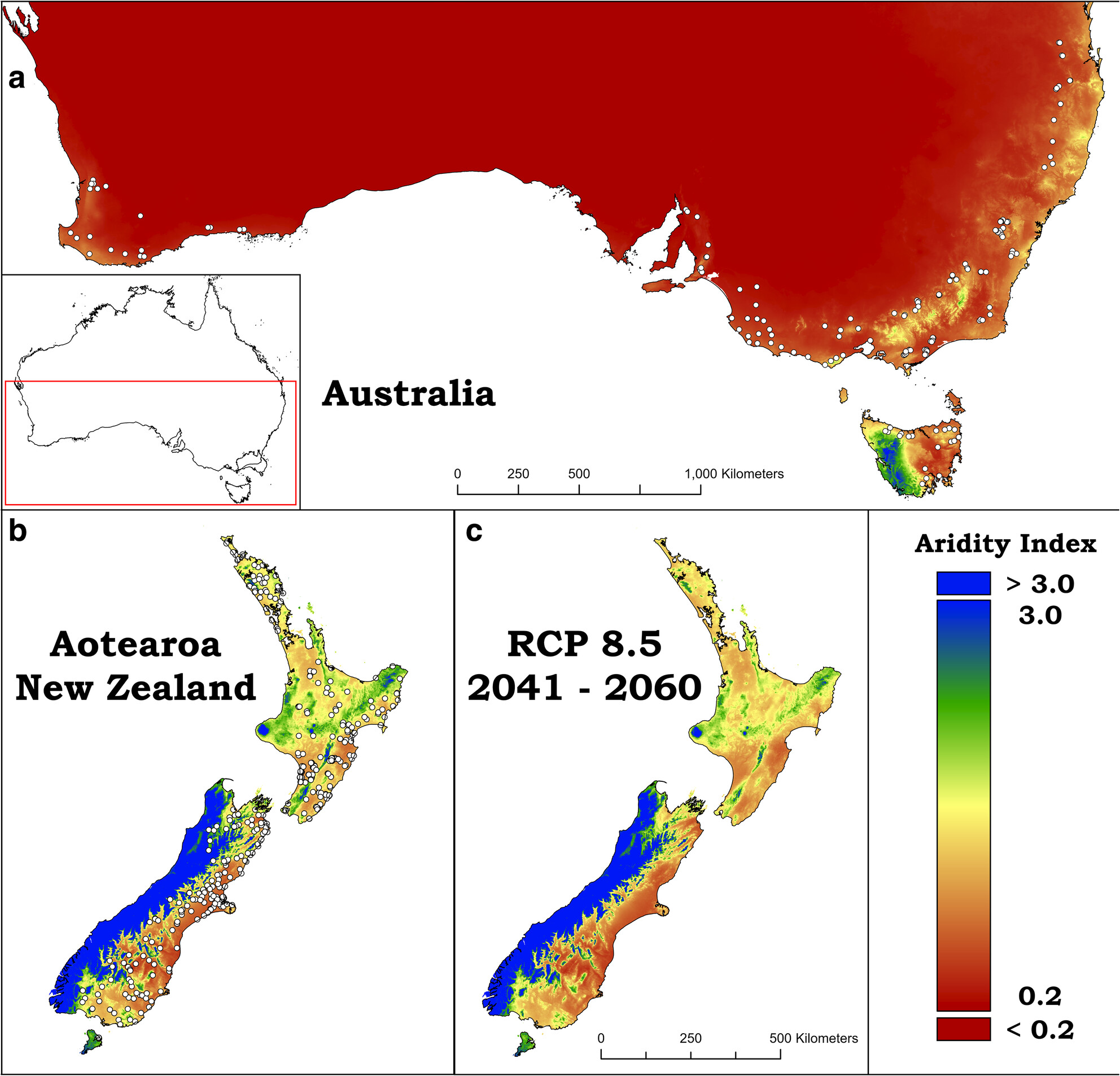
Climate change is increasing aridity, posing a threat to forest ecosystems and their microbial partners. This study examines how aridity and environmental factors shape the root microbiome of Pinus radiata, a widely planted tree species. The findings reveal that while aridity strongly influences microbial communities, soil properties like pH and organic carbon also play a key role, highlighting the importance of microbial symbionts in tree resilience to future environmental stress.
Highly Conserved Ecosystems Facing Climate Change: Rapid Shifts in Odonata Assemblages of Central European Bogs
- First Published: 09 April 2025
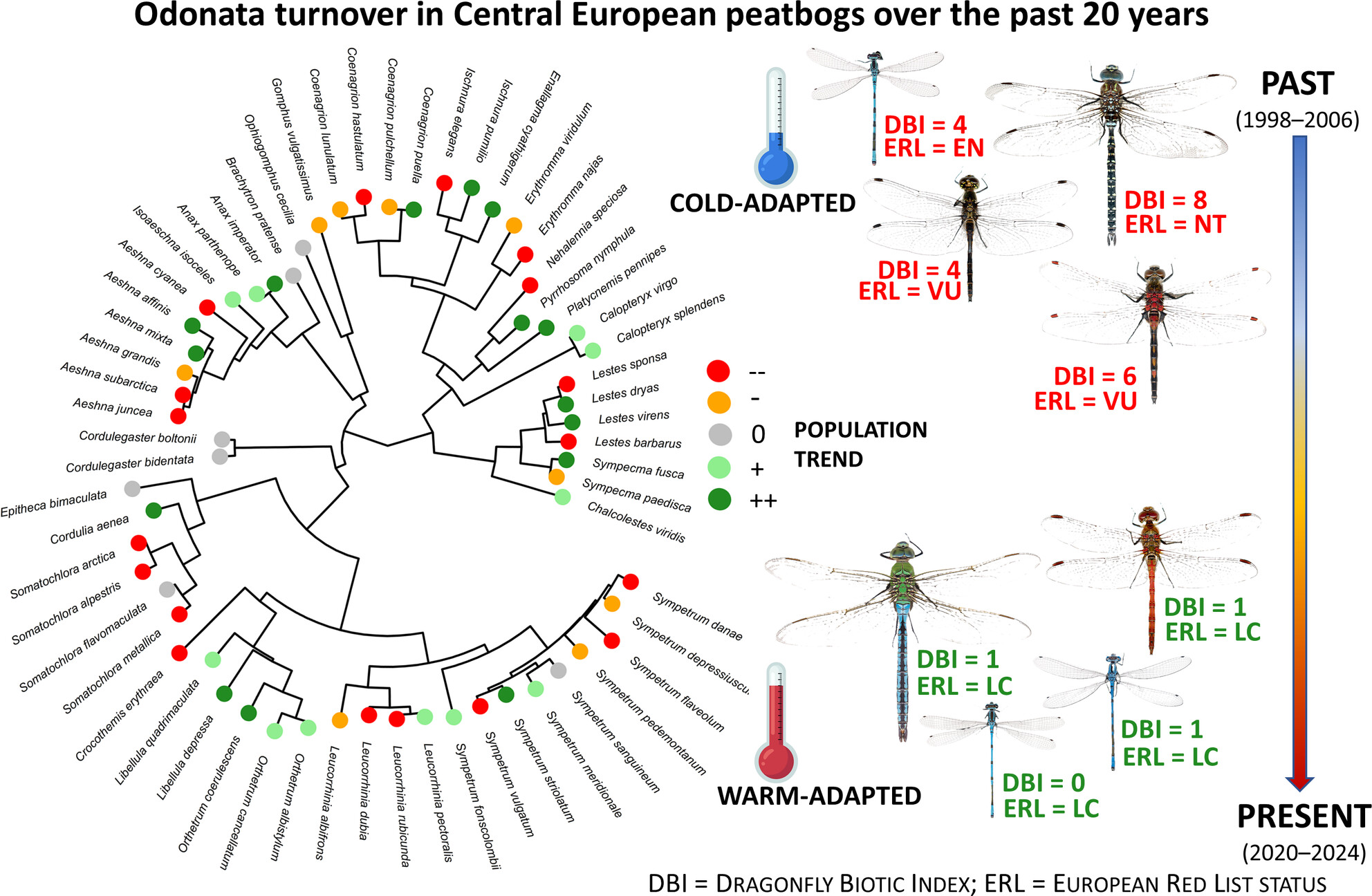
This study investigated how climate change has affected species richness, composition, taxonomic diversity, functional traits, and phylogenetic patterns of species turnover of odonatofauna of Central European raised and transitional bogs over the past 25 years. Although richness and taxonomic diversity remained stable, we recorded a pronounced shift from cold-adapted, vulnerable bog specialists toward warm-adapted habitat generalists with lower conservation value. Considering that these peatbog ecosystems are free from direct anthropogenic impact, the pronounced changes documented by this study may precede irreversible transformations of these unique habitats, highlighting the urgency of monitoring and maintaining their stability under ongoing global change.
Global Avian Frugivore-Fruit Trait Matching Decreases Toward the Tropics
- First Published: 09 April 2025
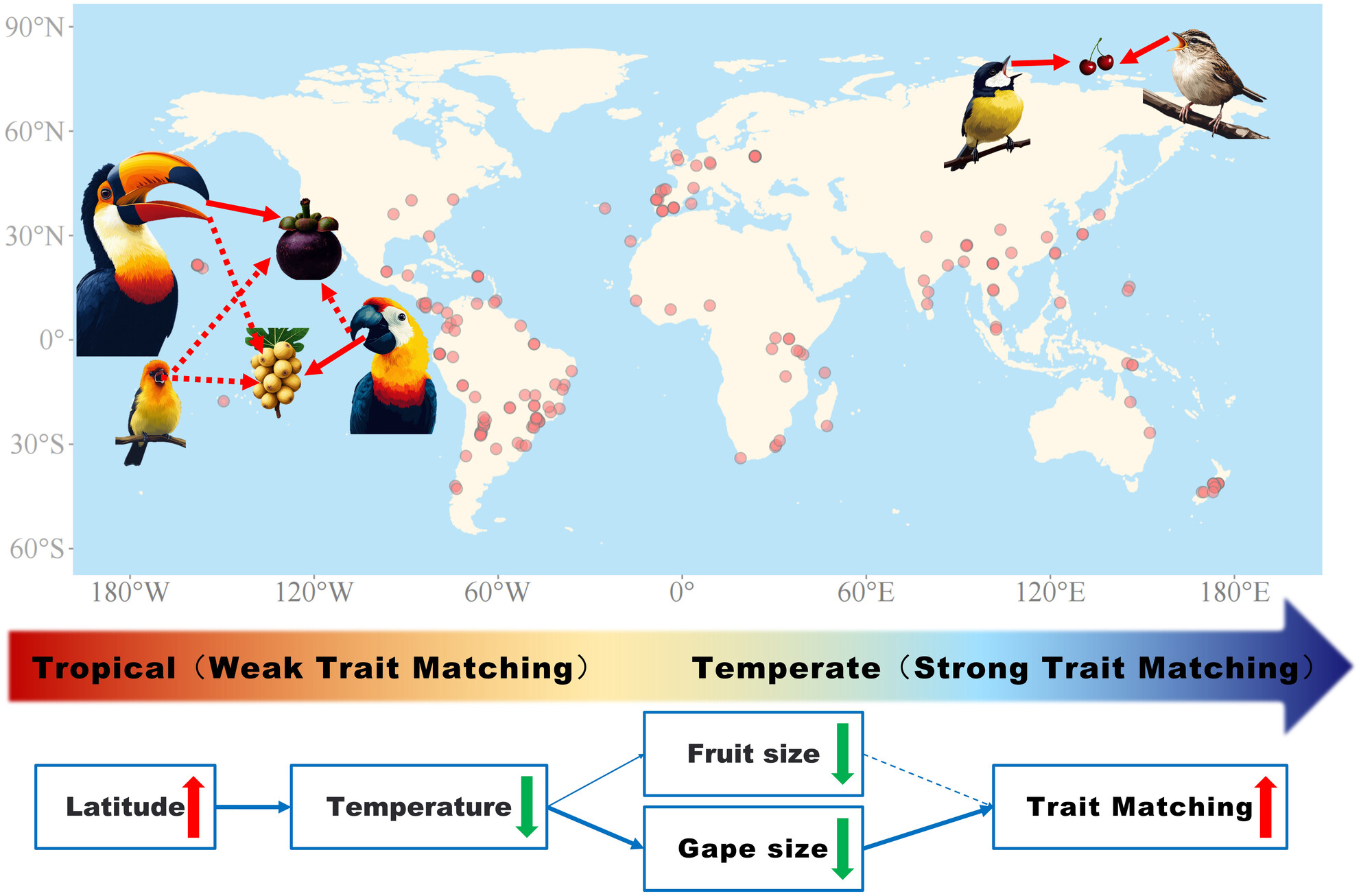
Birds and fruits often match in traits like size, but this study reveals that such matches weaken in tropical regions. Warmer climates may drive more varied interactions, leading to less strict trait matching despite higher biodiversity. These findings suggest that climate change could reshape how species interact, particularly in the tropics, with potential impacts on ecosystem stability.
Soil Bacterial β-Diversity as a Key Determinant of Belowground Productivity in Warming Alpine Ecosystems
- First Published: 10 April 2025
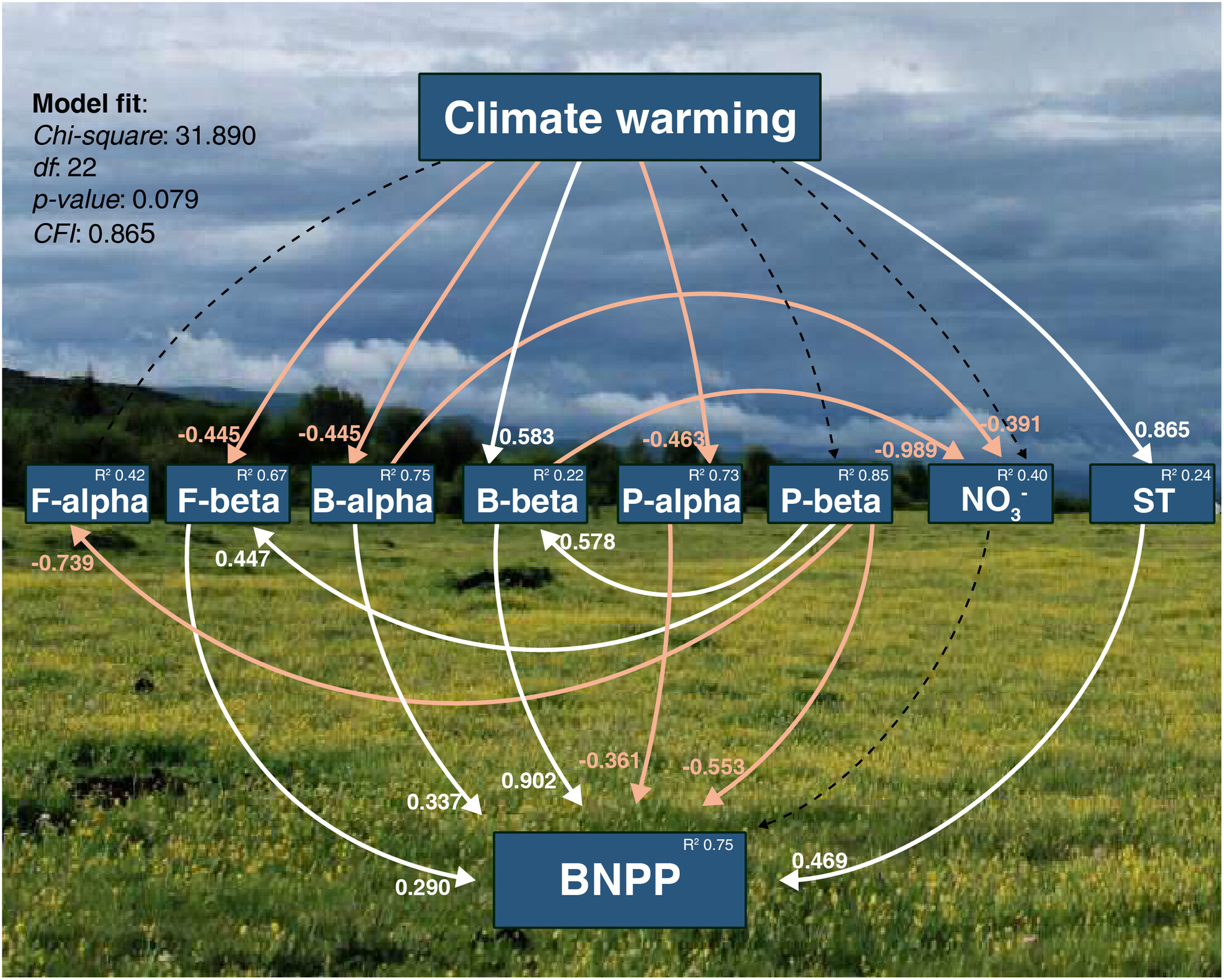
Written Summary: Belowground productivity constitutes a major component of ecosystem functioning, yet its relationship with biodiversity under climate warming remains poorly understood. Using a long-term field warming experiment in an alpine meadow, we examined the relative contributions of plant and soil microbial communities to belowground productivity. Our findings highlight the pivotal role of soil bacterial community heterogeneity in enhancing belowground carbon sequestration, driven by nitrogen availability-associated bacterial taxa under warming conditions. These results provide mechanistic insights into belowground carbon dynamics and underscore the importance of microbial diversity in sustaining ecosystem functioning in a warming world.
Decoupling Responses of Phyllosphere and Rhizosphere Bacterial Communities to Spatiotemporal Environmental Changes
- First Published: 07 April 2025
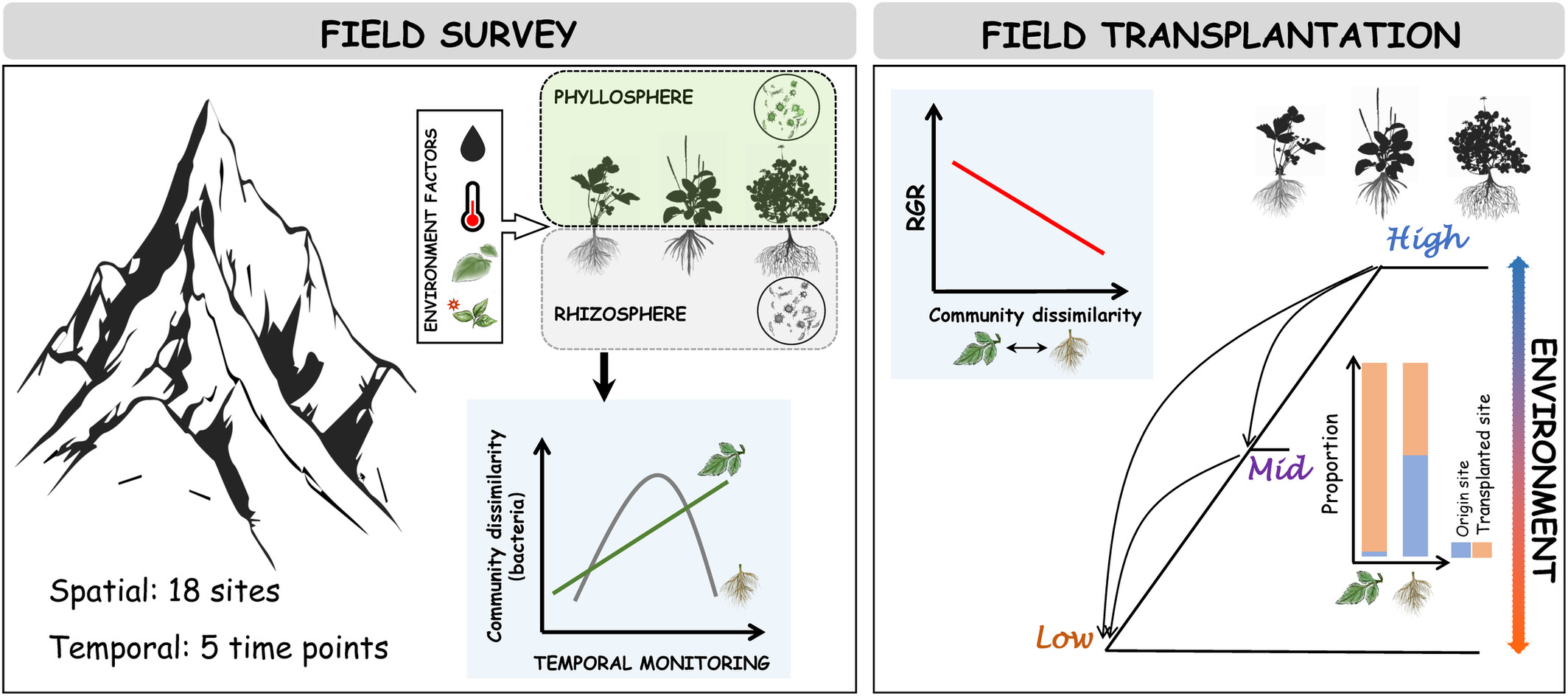
By integrating a comprehensive field survey with a transplantation experiment across elevations, we showed decoupling responses of rhizosphere and phyllosphere bacterial communities in three plant species to both temporal and spatial variations in enviroments. The decoupling responses of these communities profoundly affected the performance of transplanted plants. Our findings highlighted the importance of compartment-by-environment interactions in shaping plant-microbial interactions.
Iron-Driven Fast Decomposition of Soil Carbon Under Periodic Anoxia
- First Published: 15 April 2025
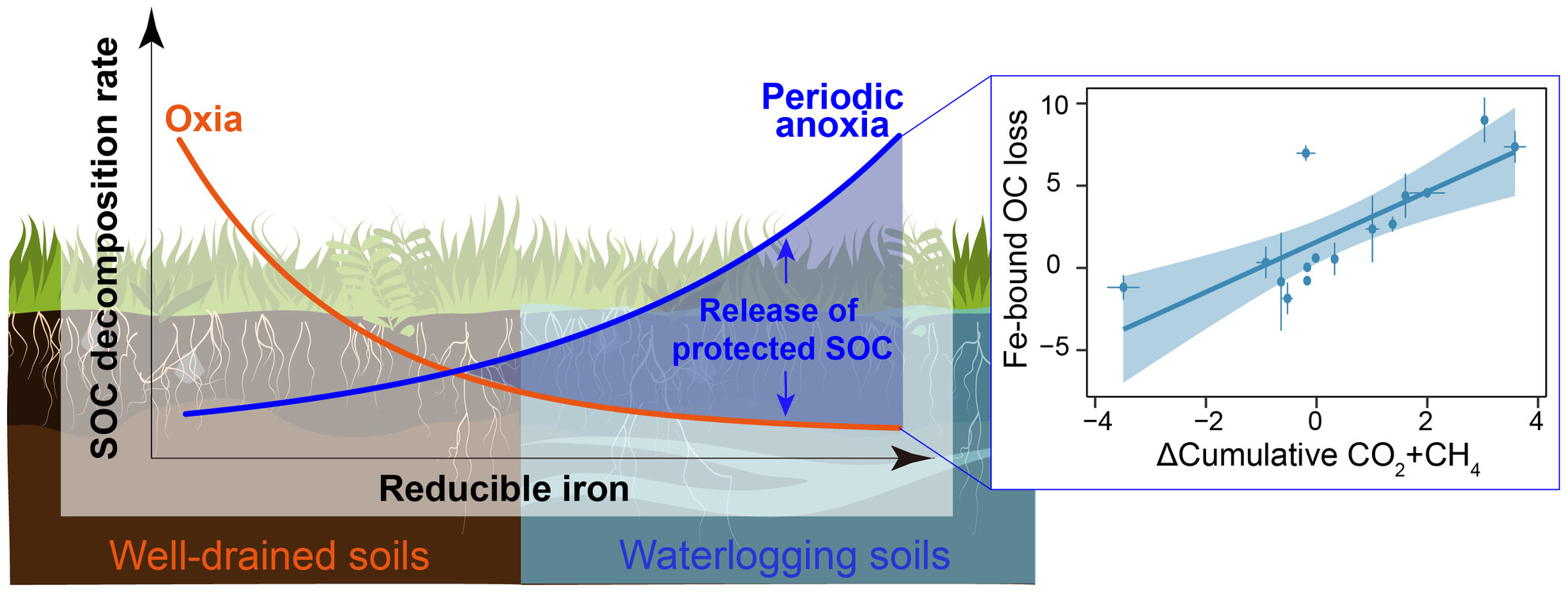
Periodic waterlogging, once assumed to preserve soil carbon, can instead speed up its loss in soils rich in reducible iron. Experiments on 20 soils across China show that 70% of them lost carbon faster under short oxygen-free conditions, as iron reduction released trapped carbon, fueling microbial breakdown. While temporary flooding may stabilize carbon in some soils, climate-driven heavy rains or floods could worsen carbon loss in iron-rich regions, challenging the idea that waterlogged soils always act as carbon sinks.
RESPONSE
Allochthonous Organic Carbon Stored in Blue Carbon Ecosystems Can Be Additional and Provide Genuine Climate Mitigation
- First Published: 18 April 2025
Blue carbon ecosystem restoration (and avoided conversion) are important natural climate solutions. Blue carbon ecosystems accumulate carbon through in situ photosynthesising vegetation (autochthonous) and deposition of sediments during tidal inundation (allochthonous). We debate the treatment of allochthonous carbon (which was not taken out of the atmosphere by the blue carbon ecosystem) in blue carbon projects.
RESEARCH ARTICLE
Alleviating Nitrogen and Phosphorus Limitation Does Not Amplify Potassium-Induced Increase in Terrestrial Biomass
- First Published: 23 April 2025
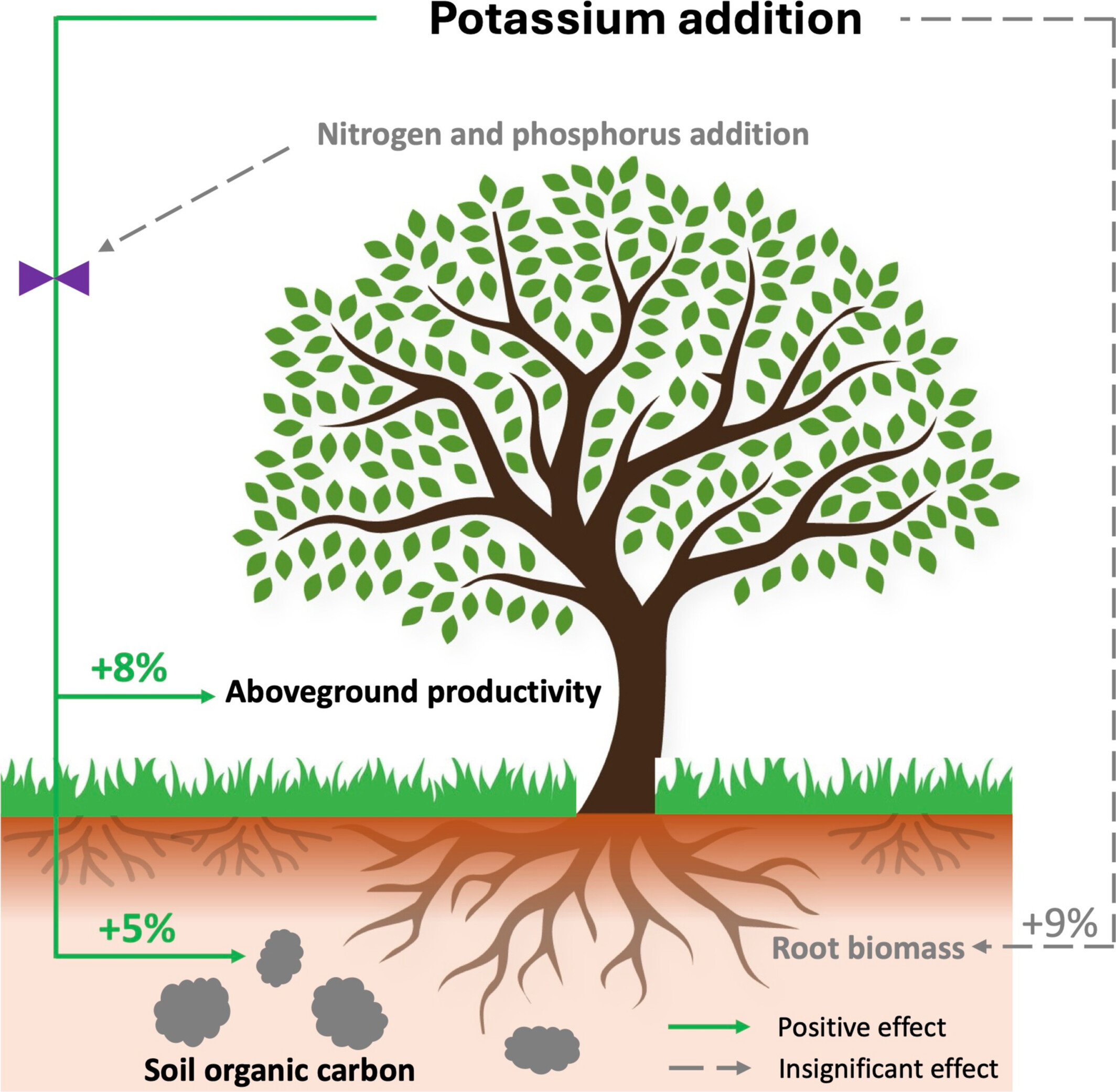
By collecting and analyzing the data from 779 global paired observations, we found that potassium addition can increase aboveground production and soil organic carbon content by 8% and 5%, respectively, and thus contribute to terrestrial carbon sequestration. However, applying nitrogen and phosphorus does not further amplify the positive effects of potassium addition on aboveground production and soil organic carbon. Our study suggests that potassium addition plays a great role in stimulating terrestrial carbon stock, but this benefit is not enhanced by alleviating nitrogen and phosphorus limitation.
Balancing Organic and Inorganic Carbon Dynamics in Enhanced Rock Weathering: Implications for Carbon Sequestration
- First Published: 16 April 2025
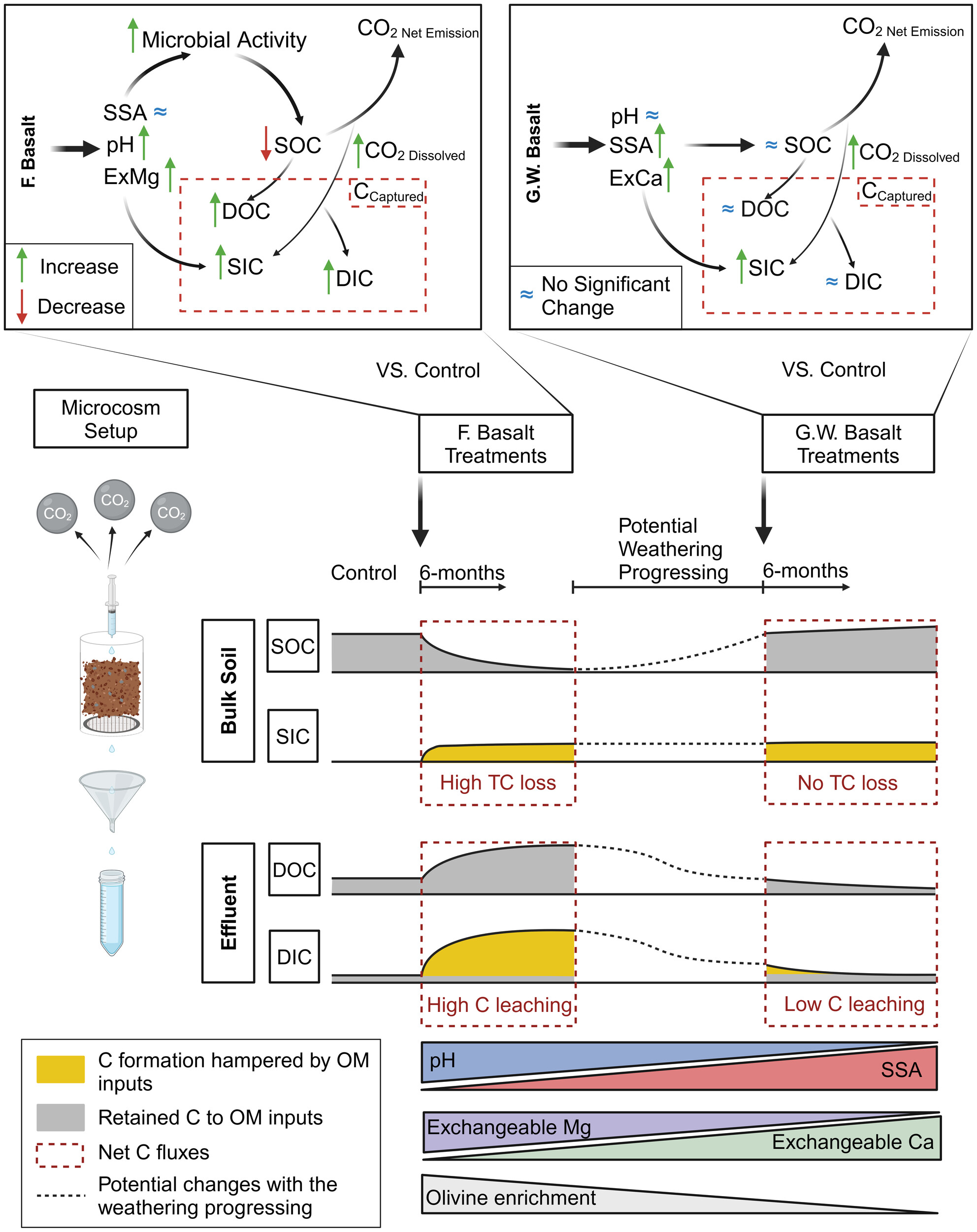
Enhanced rock weathering involves adding crushed silicate rock to soils, capturing atmospheric carbon dioxide by forming inorganic carbon. Despite significant inorganic carbon accumulation at the initial stage, this method can also trigger significant losses of soil organic carbon due to increased soil pH. However, with minerals weathering, they become more effective at retaining organic carbon besides inorganic carbon formation. Importantly, plant residue inputs can limit inorganic carbon formation by acidifying the soil. Our findings emphasize that minimizing soil organic carbon losses is crucial for optimizing the long-term climate benefits of enhanced rock weathering.
Increased Growth Temperatures Alter Arctic Plant Responses to Heat Wave and Drought
- First Published: 15 April 2025
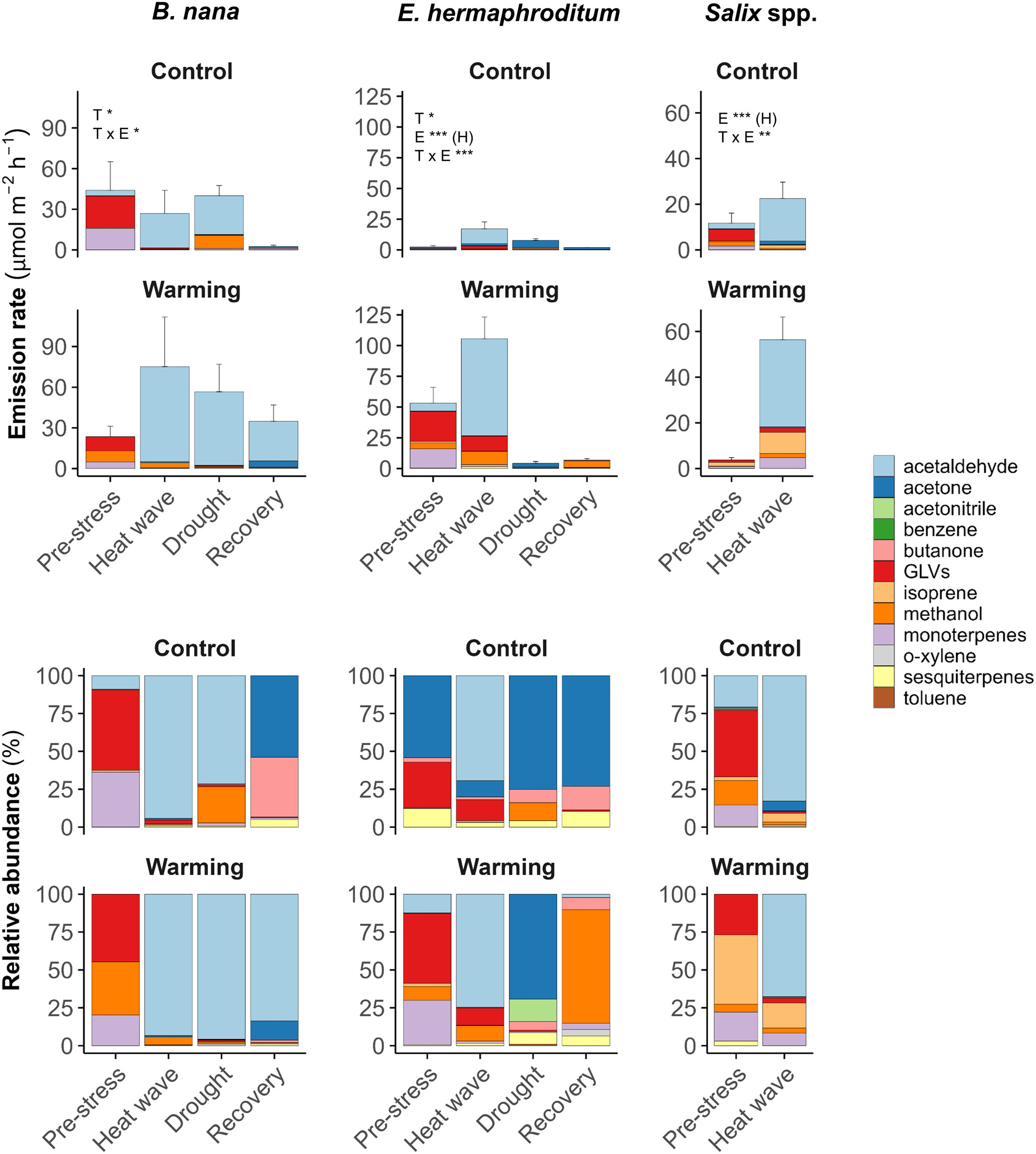
As the Arctic warms and heatwaves become more frequent, vegetation changes may alter the ecosystem. We investigated how warmer temperatures modulate Arctic shrub responses to heat wave and drought. A +5°C increase accelerates leaf unfolding and increases the emissions of volatile organic compounds (VOCs), known to influence the atmosphere and climate. Plants exposed to warmer temperatures emit more VOCs during the heat wave and show reduced water-use efficiency compared to control plants, suggesting increased temperature sensitivity and higher vulnerability to drought.
Natural and Human Disturbances Have Non-Linear Effects on Whole-Ecosystem Carbon Storage in an African Savanna
- First Published: 15 April 2025
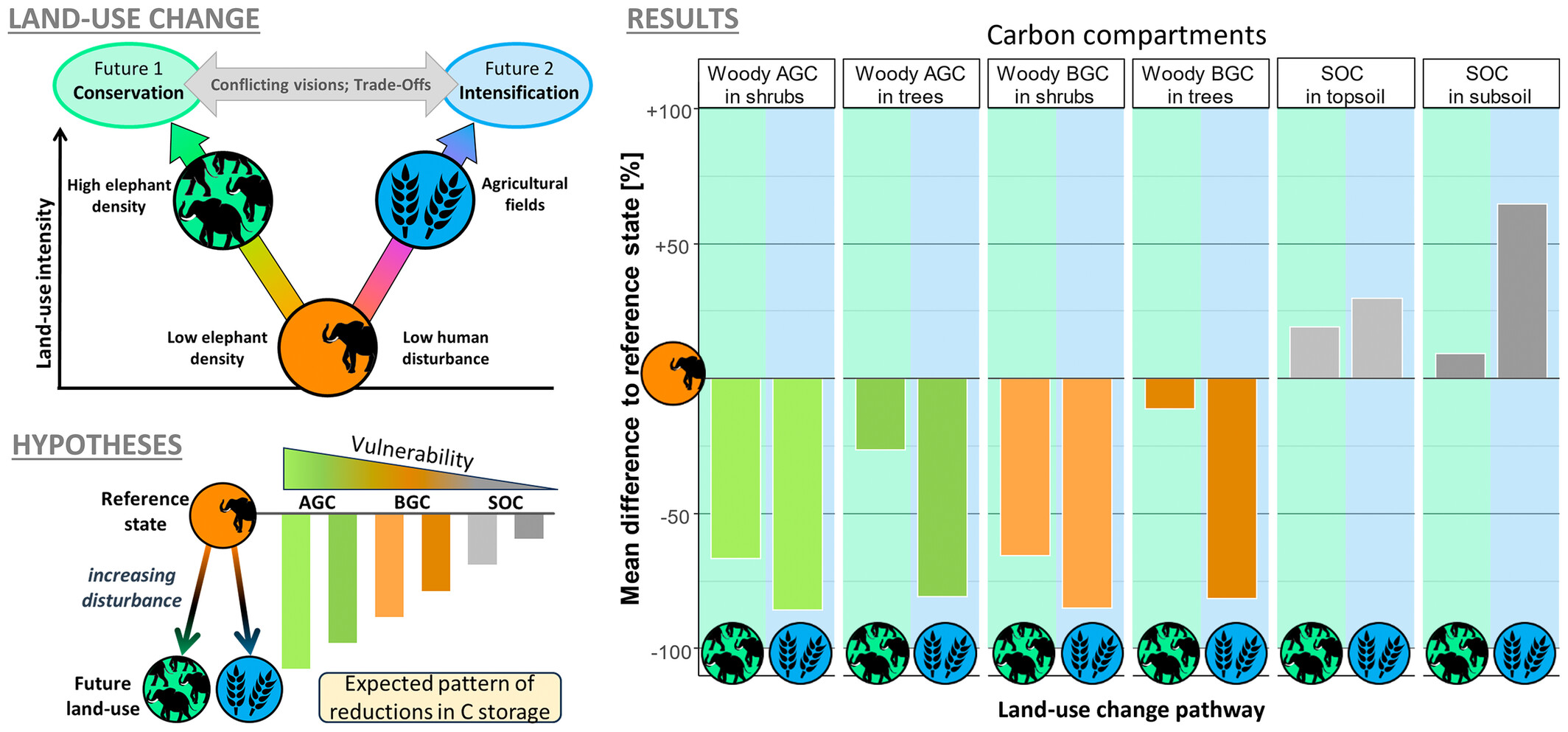
Storing carbon is an essential function of woody vegetation and soils, but it has been understudied so far in savannas. These ecosystems are typically disturbed by herbivory, woodcutting, and wildfires, rendering carbon storage assessment difficult, especially where land use is changing. We have overcome these difficulties and present carbon storage across several ecosystem compartments, such as shrubs, trees, their roots, and soils. We find that carbon in vegetation is more vulnerable to land use change than in stable soil carbon pools. However, this process is not linear because medium disturbance levels are beneficial for savanna carbon storage; only higher land use intensity is detrimental.
INVITED COMMENTARY
RESEARCH ARTICLE
The Unstable Relationship Between Drought Status and Leaf Water Content Complicates the Remote Sensing of Tree Drought Stress
- First Published: 18 April 2025
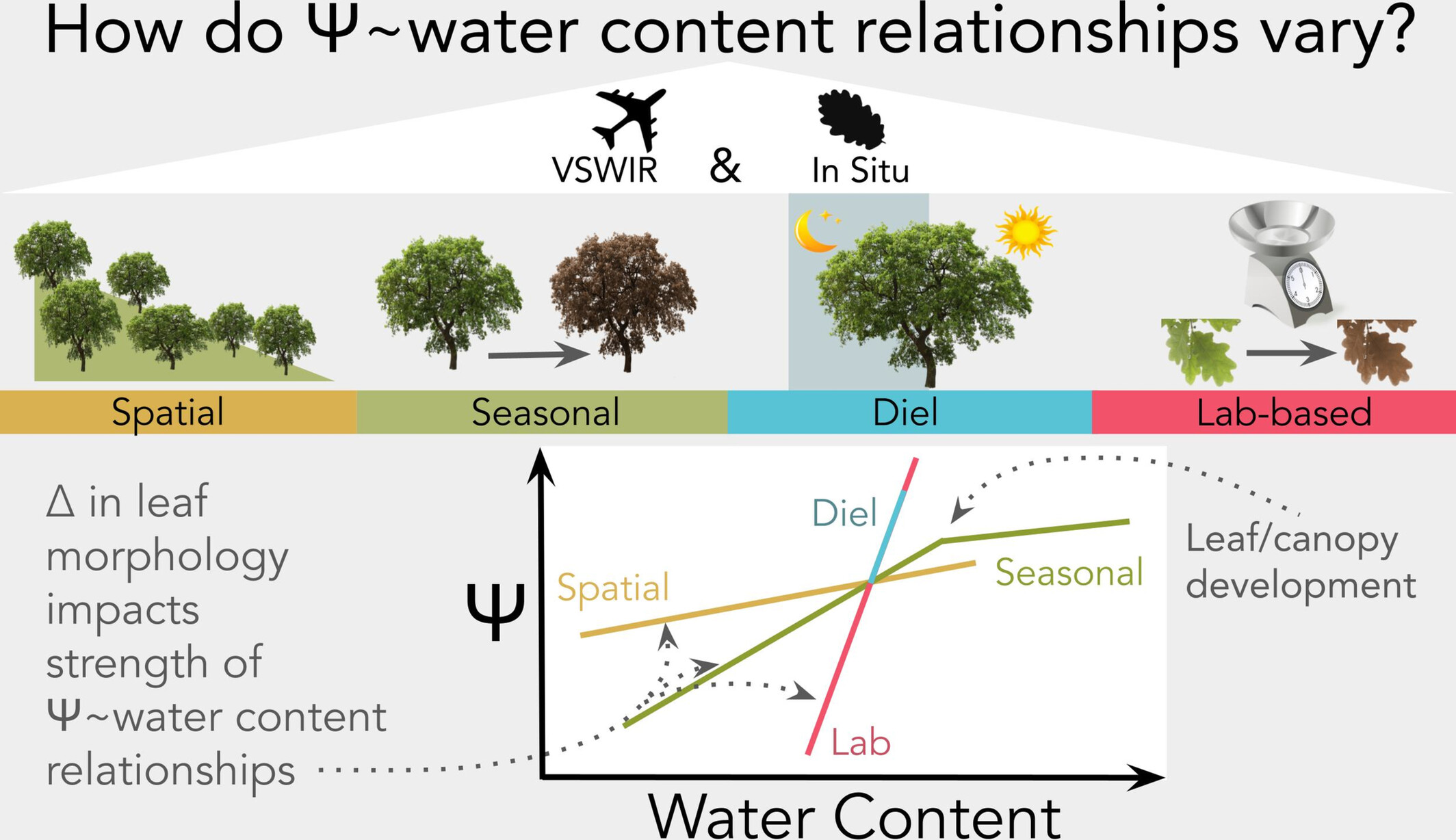
Remote sensing can monitor plant drought stress across ecosystems but is limited by uncertain links between physiological stress and measurements of water content. We examined how water potential and water content, measured in the field, laboratory, and via airborne imaging, vary over time and space in two oak species. Night-to-day field measurements better matched laboratory-based drydowns than those taken across different locations or between spring and fall. Growth-related changes in leaf and canopy-level characteristics weakened these relationships, highlighting challenges in using remote sensing to compare drought stress across locations. Despite limitations, high-frequency remote sensing shows promise for detecting the development of drought stress through time once leaf growth has ceased.
The Forest After Tomorrow: Projecting the Impact of a Collapsing Atlantic Meridional Overturning Circulation on European Tree-Species Distributions
- First Published: 24 April 2025
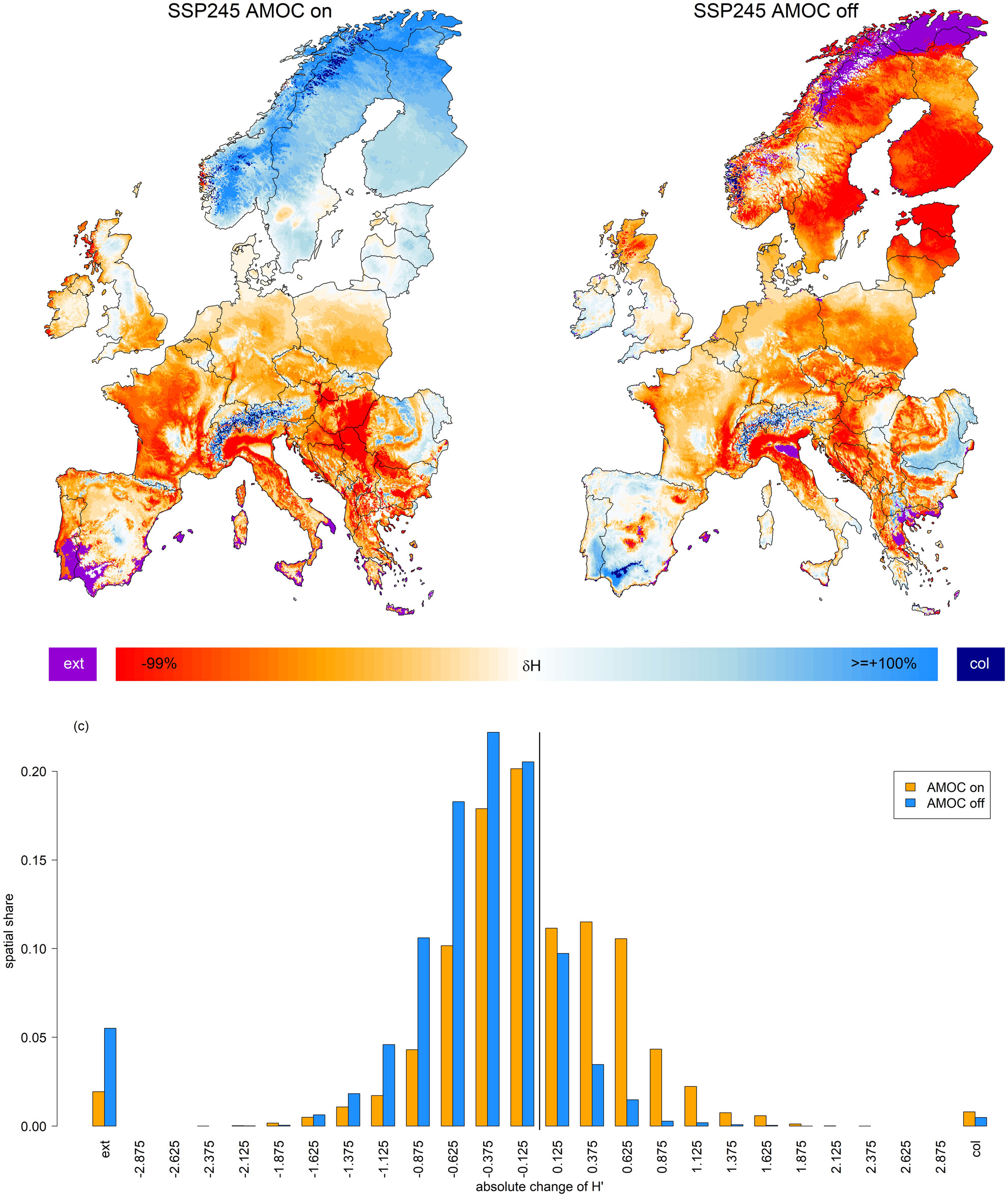
This study examines the effects of a collapsing Atlantic Meridional Overturning Circulation (AMOC) in comparison to a common climate-change scenario. It shows that an AMOC collapse would result in contrasting tree-species portfolios across Europe in comparison to an active AMOC scenario and suggests catastrophic effects on forest ecosystems in Scandinavia.
Positive Feedback on Climate Warming by Stream Microbial Decomposers Indicated by a Global Space-For-Time Substitution Study
- First Published: 05 April 2025
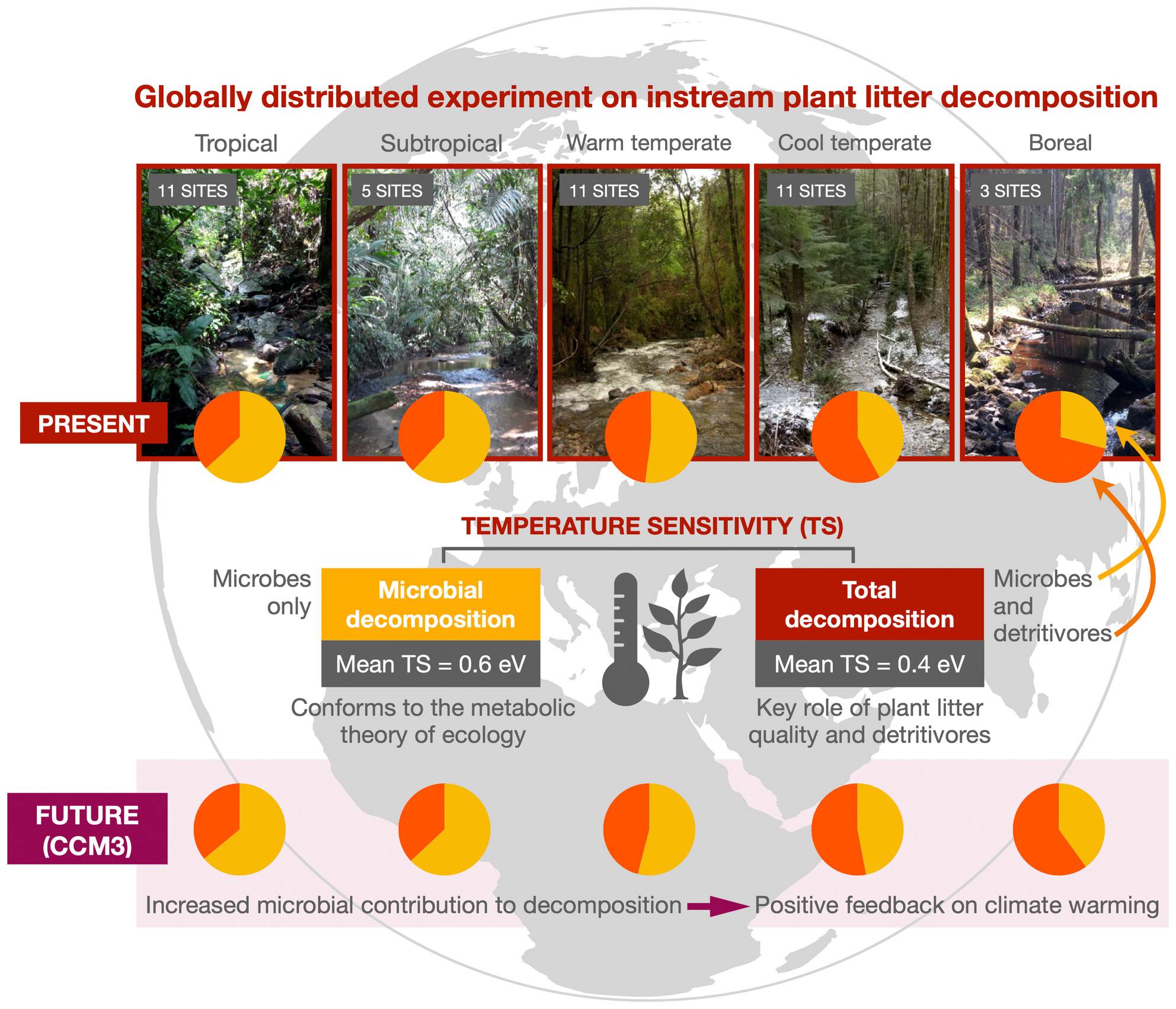
A globally distributed study in stream ecosystems revealed that plant litter decomposition by microorganisms is more sensitive to temperature than decomposition in the presence of detritivores, where litter quality plays a key role. Climate warming is expected to enhance the microbial contribution to decomposition, with a major influence of riparian species composition on this process.
LETTER TO THE EDITOR
Additionality Revisited for Blue Carbon Ecosystems: Ensuring Real Climate Mitigation
- First Published: 17 April 2025
RESEARCH ARTICLE
Sea-Ice Retreat From the Northeast Greenland Continental Shelf Triggers a Marine Trophic Cascade
- First Published: 24 April 2025
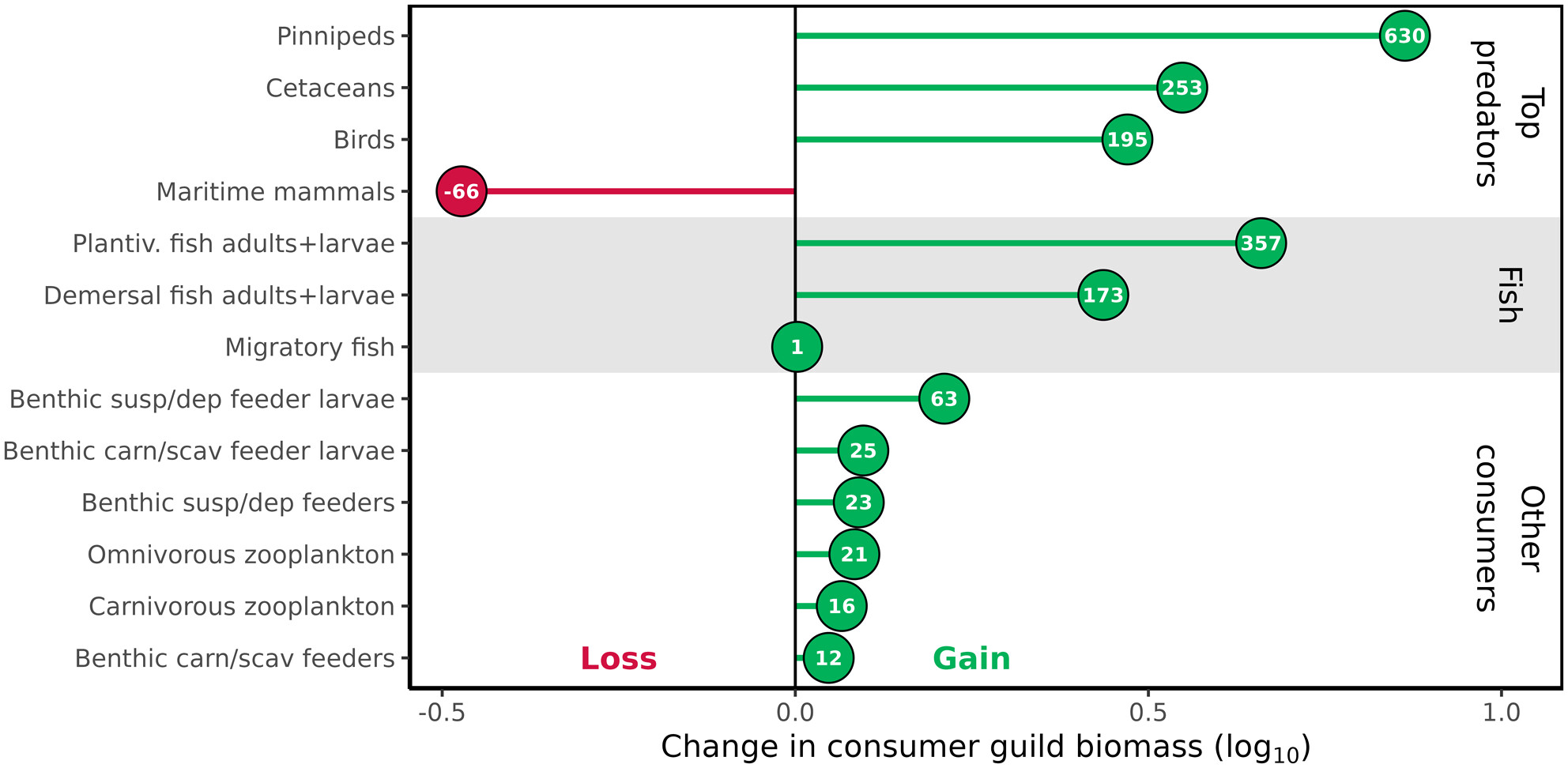
We built a computer model of the marine food web for the continental shelf off northeast Greenland. As climate change melts sea-ice, more light will penetrate the water column. This triggers a cascade of increasing biomass in the system from plankton to fish to whales, but a loss of habitat means fewer polar bears.
Monsoon Climate and Anthropogenic Influences Shape Primate Distributions Across the Southeastern Edge of the Qinghai-Tibet Plateau
- First Published: 18 April 2025
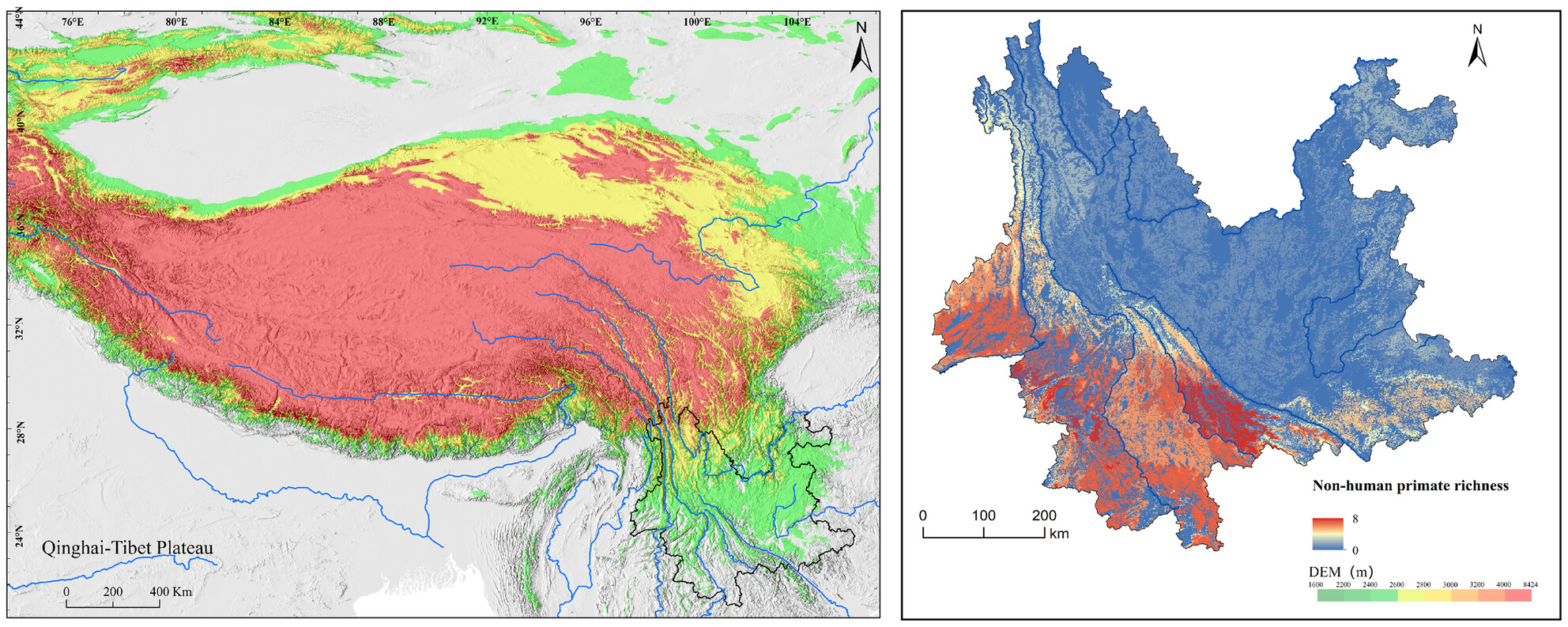
The western Longitudinal Range Gorge (LRG) and the eastern Yunnan Plateau (YP) in the southeastern Edge of the Qinghai-Tibet Plateau show stark differences in primate species richness. The LRG, with more precipitation and milder temperature variation, supports a diverse range of primate species because of the moist evergreen deciduous forests it harbors. In contrast, the drier central YP is home to only one primate species. Shifts in the monsoon climate have been the critical factor in shaping this distribution, while recent anthropogenic activities, such as habitat loss and hunting, have led to range contractions in many primate taxa.
INVITED COMMENTARY
Rewetting Boreal Peatlands: Restoring Carbon Function?
- First Published: 21 April 2025
RESPONSE
Statistical Analysis of Basalt Weathering Disproves the Null Hypothesis
- First Published: 23 April 2025
This article addresses several concerns raised about the methods employed to quantify carbon dioxide removal via enhanced rock weathering. We showed that the rock analysis data used is indeed of sufficient quality, that the randomized complete block design does indeed show statistically significant cation loss above baseline, and finally that the immobile tracer approach to quantifying application rate is statistically significant. We acknowledge that analytical noise broadens the error bars for the application rate estimation.
RESEARCH ARTICLE
Global Soil Methane Uptake Estimated by Scaling Up Local Measurements
- First Published: 25 April 2025
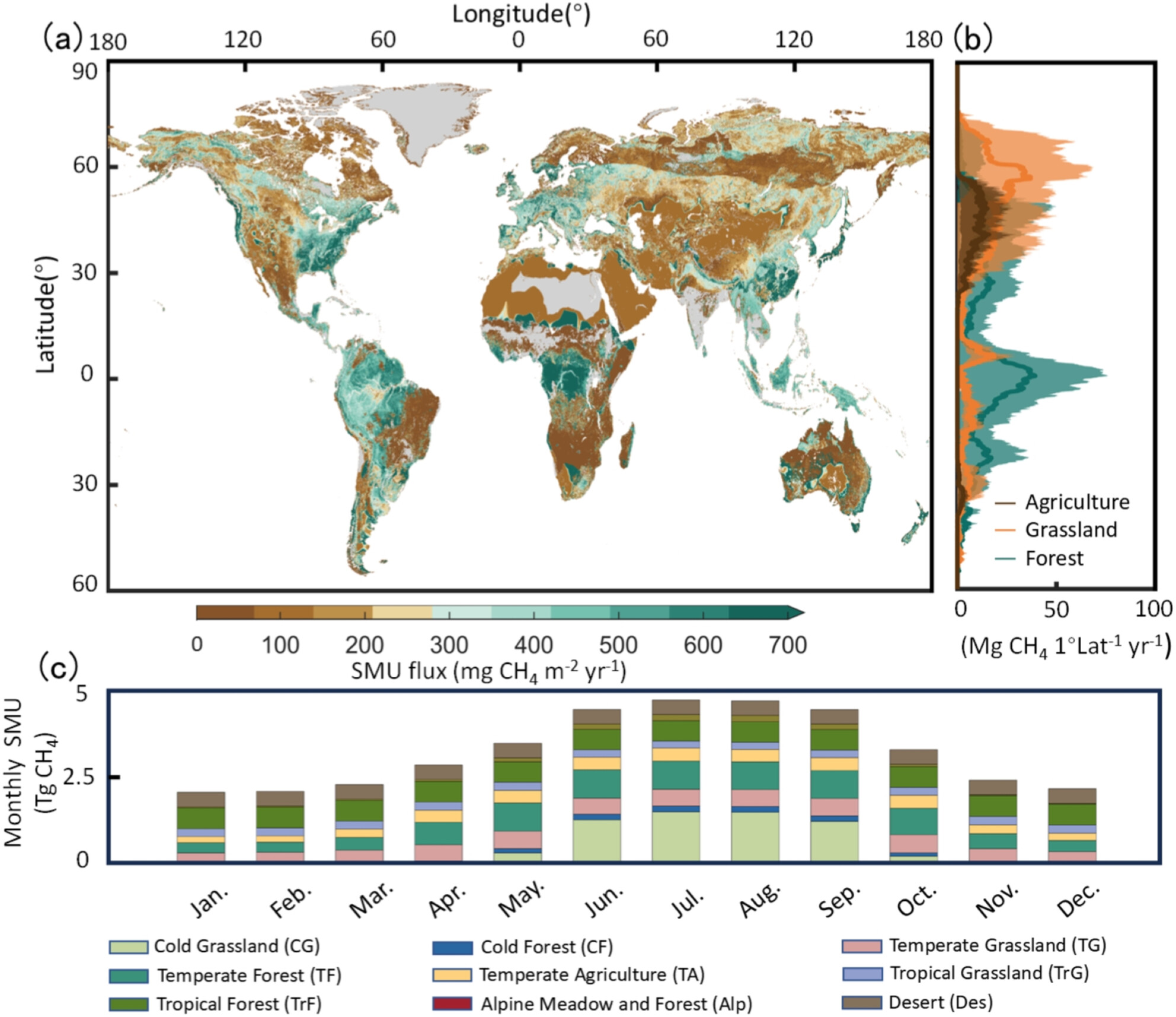
We develop a data-driven approach to refine this global estimate by incorporating local data of 79,800 flux measurements from 198 sites, this novel approach links the global SMU budget to local SMU fluxes by varying its parameters with soil properties. Our 2003–2018 global SMU estimate is ~39.0 Tg CH4 year−1—about 30% higher than existing bottom-up estimates and consistent with top-down assessments. Cold grasslands and deserts were found to contribute nearly 30% of the total SMU and the projected future global SMU is shaped by temperature and atmospheric methane, though local SMU is primarily influenced by changes in soil moisture.
INVITED COMMENTARY
Intertwined Relationship Between Soil pH and Microbes in Biogeography
- First Published: 25 April 2025
RESEARCH ARTICLE
Migratory Birds Advance Spring Arrival and Egg-Laying in the Arctic, Mostly by Travelling Faster
- First Published: 09 April 2025
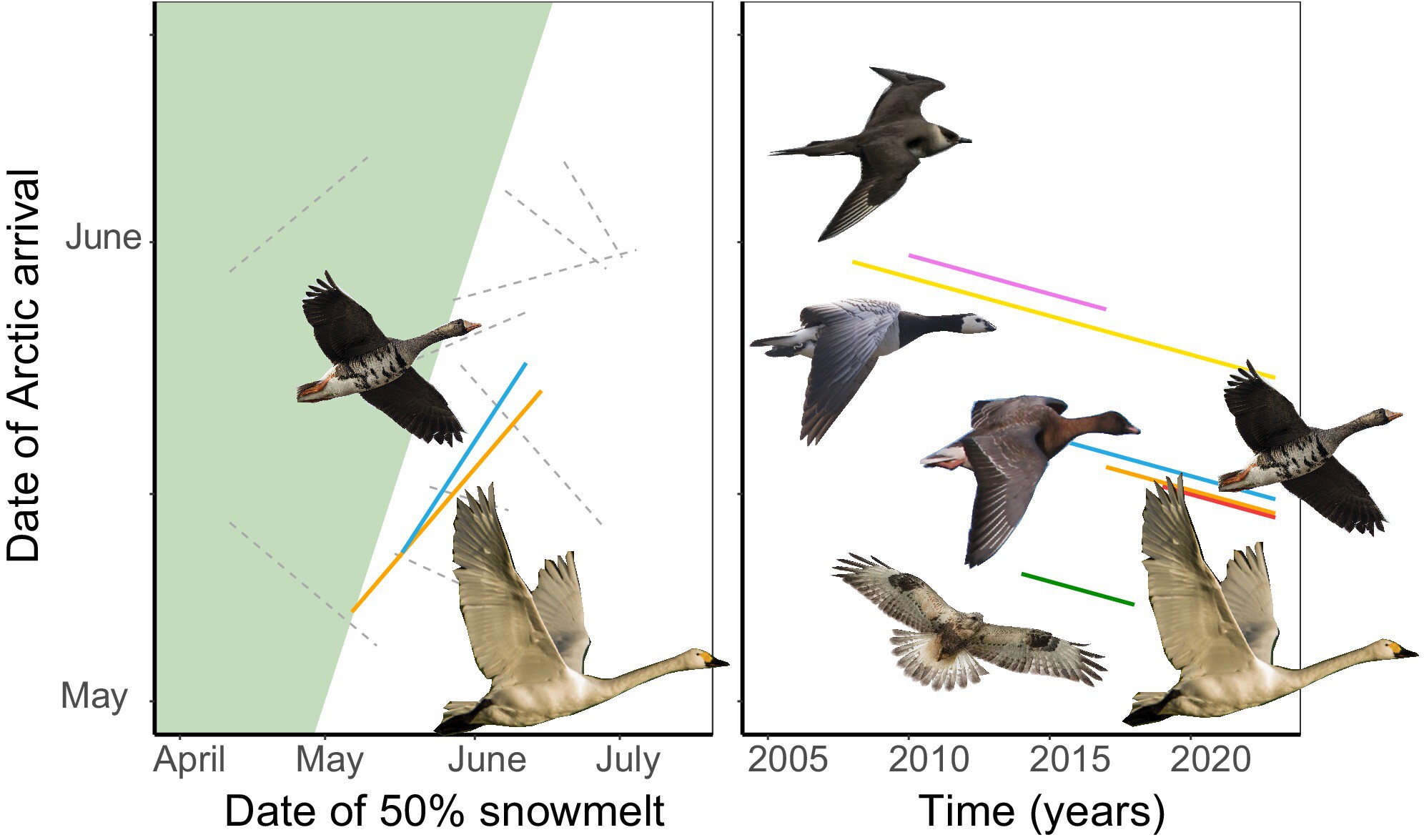
A warming climate is affecting the phenology of life on earth, including when birds migrate and start breeding. We show that earlier arrival is a general pattern also for birds travelling to the Arctic region, arriving earlier when snow melts early as well as with time. Several species are able to do so by travelling faster, with birds spending less time at stopovers during migration.
OPINION
Pesticide Risk Assessment in a Changing World
- First Published: 22 April 2025
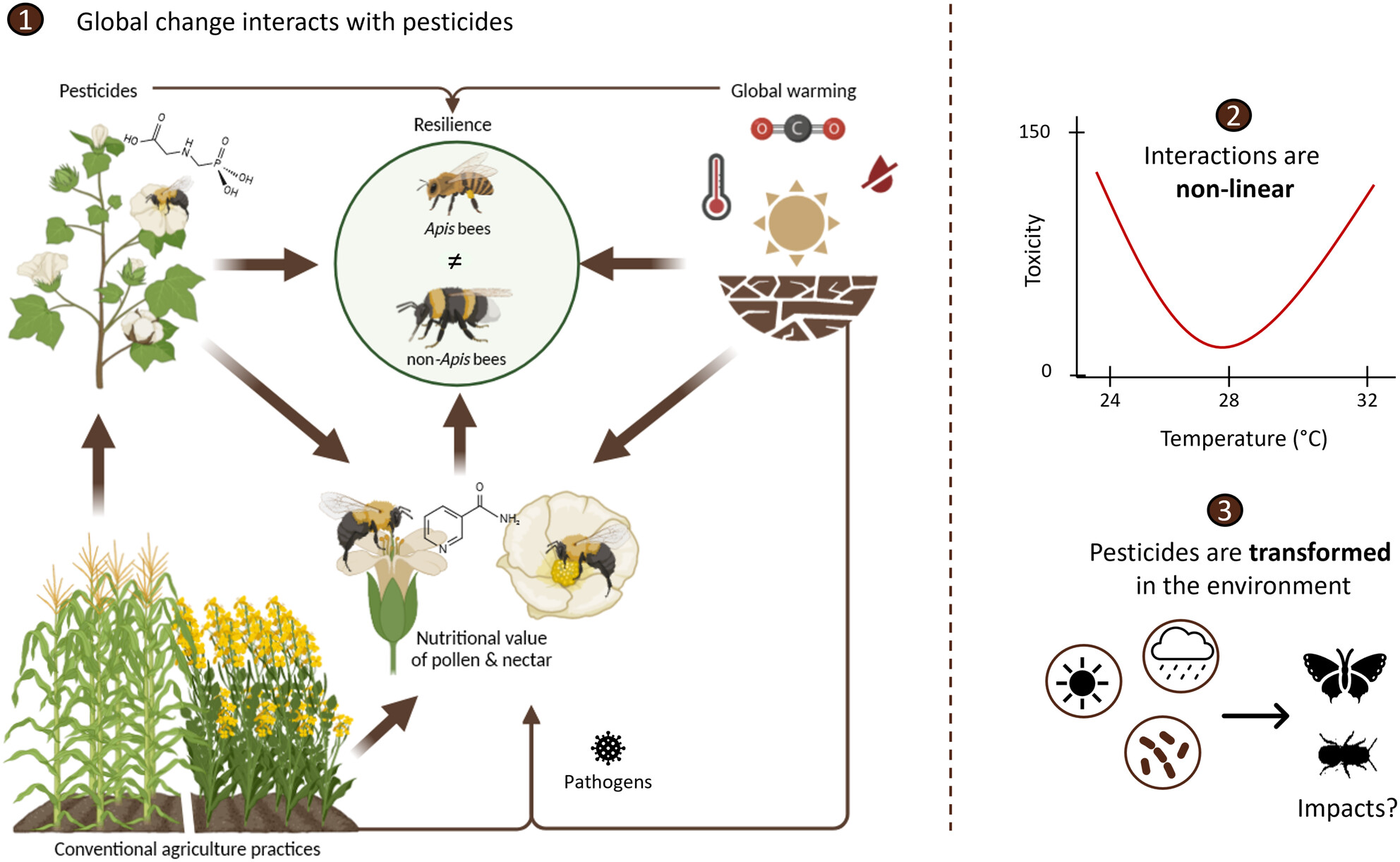
The assessment of the risks posed by pesticides to biodiversity and ecosystems often relies on domesticated model species and measures of acute lethality, leading to an incomplete understanding of the broad impacts on non-target organisms like pollinators or insects beneficial to agriculture. These assessments must undergo a paradigm shift to better protect biodiversity, ecosystems, and agricultural sustainability. Expanding beyond model species, considering the complex interactions between different environmental factors, assessing the effects of pesticide by-products, and prioritizing metrics beyond acute lethality can better capture the ecological and evolutionary complexities of pesticide impacts in a rapidly changing world.
RESEARCH ARTICLE
Demand-Resource Mismatch Explains Body Shrinkage in a Migratory Shorebird
- First Published: 16 April 2025
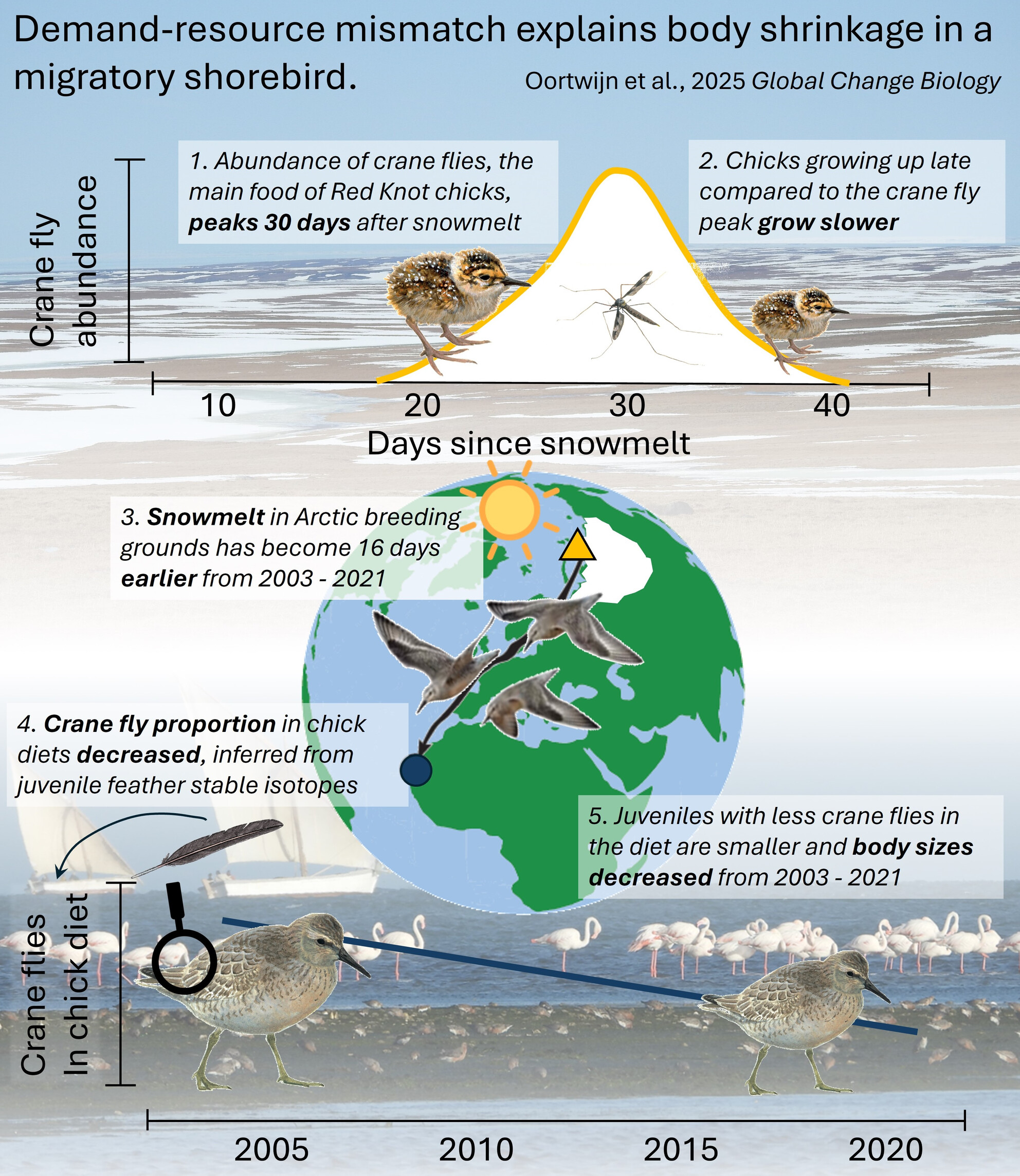
Body size changes due to climate change can potentially be shaped by changing conditions during development. Juvenile red knots have smaller bodies in years with early snowmelt, caused by slower growth as chicks on the Arctic tundra, when they were mismatched with an earlier peak abundance of crane flies. Stable isotopes in juveniles' feathers, sampled on the West African wintering grounds but grown as chicks, revealed that the crane fly proportion in chick diets was lower in smaller juveniles and decreased over two decades of advancing snowmelt.
INVITED COMMENTARY
Future of Food Webs: The Role of Biotic Interactions in Predicting the Impact of Climate and Land Use Change
- First Published: 25 April 2025
RESEARCH ARTICLE
Stronger Drought Response of CO2 Fluxes in Tundra Heath Compared to Sphagnum Peatland in the Sub-Arctic
- First Published: 24 April 2025
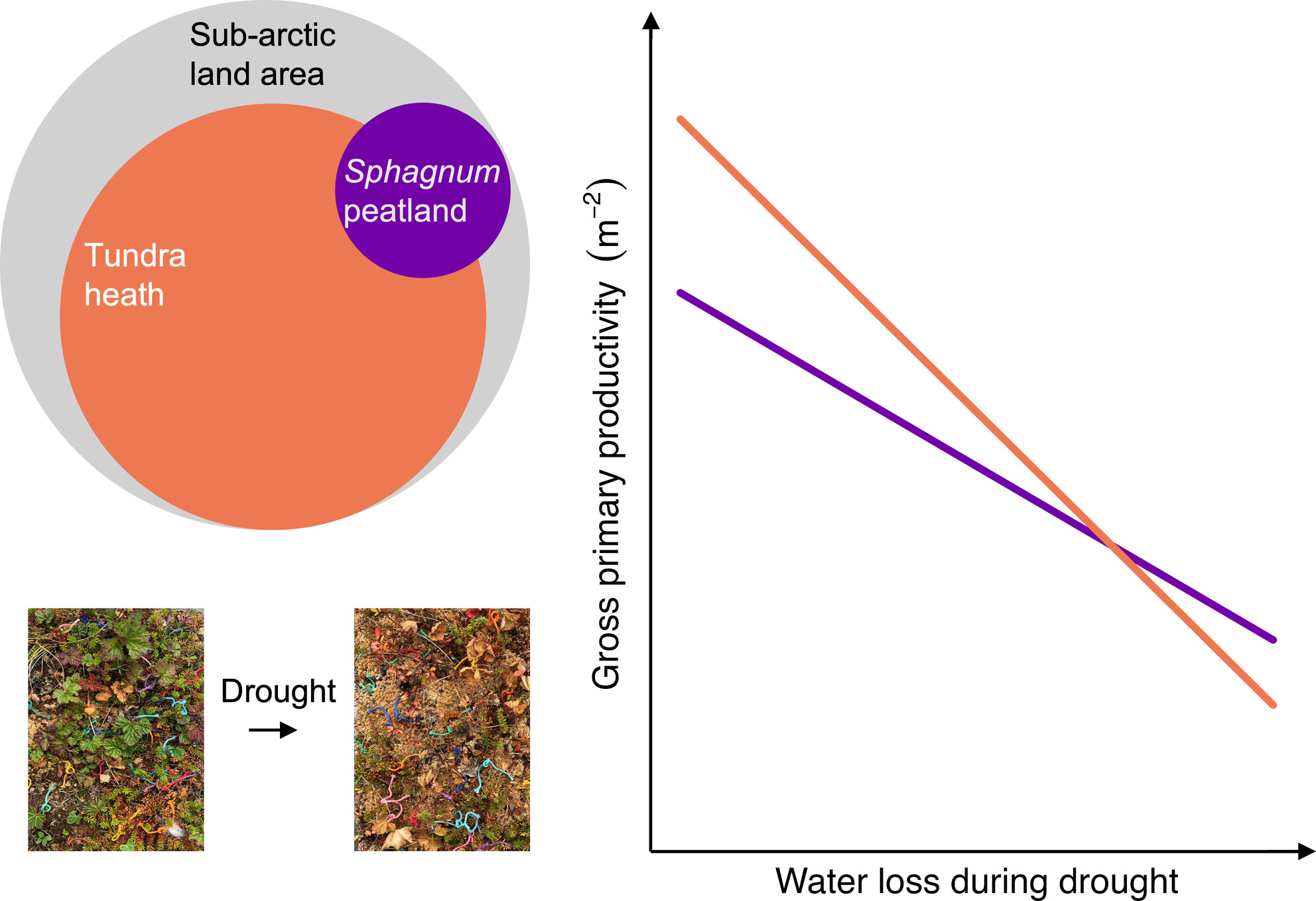
Drought events cause lasting impacts on plant communities and carbon cycling in the sub-arctic. Under experimental drought, tundra heath showed stronger reductions in CO2 uptake and higher plant mortality than Sphagnum peatland. This differential sensitivity, previously unaccounted for, might be important under intensifying drought events and could significantly reduce total arctic net CO2 uptake.
SCIENCE BEHIND THE NEWS
Forest Degradation Is Undermining Progress on Deforestation in the Amazon
- First Published: 23 April 2025
RESEARCH ARTICLE
Tundra Vegetation Community Type, Not Microclimate, Controls Asynchrony of Above- and Below-Ground Phenology
- First Published: 02 April 2025
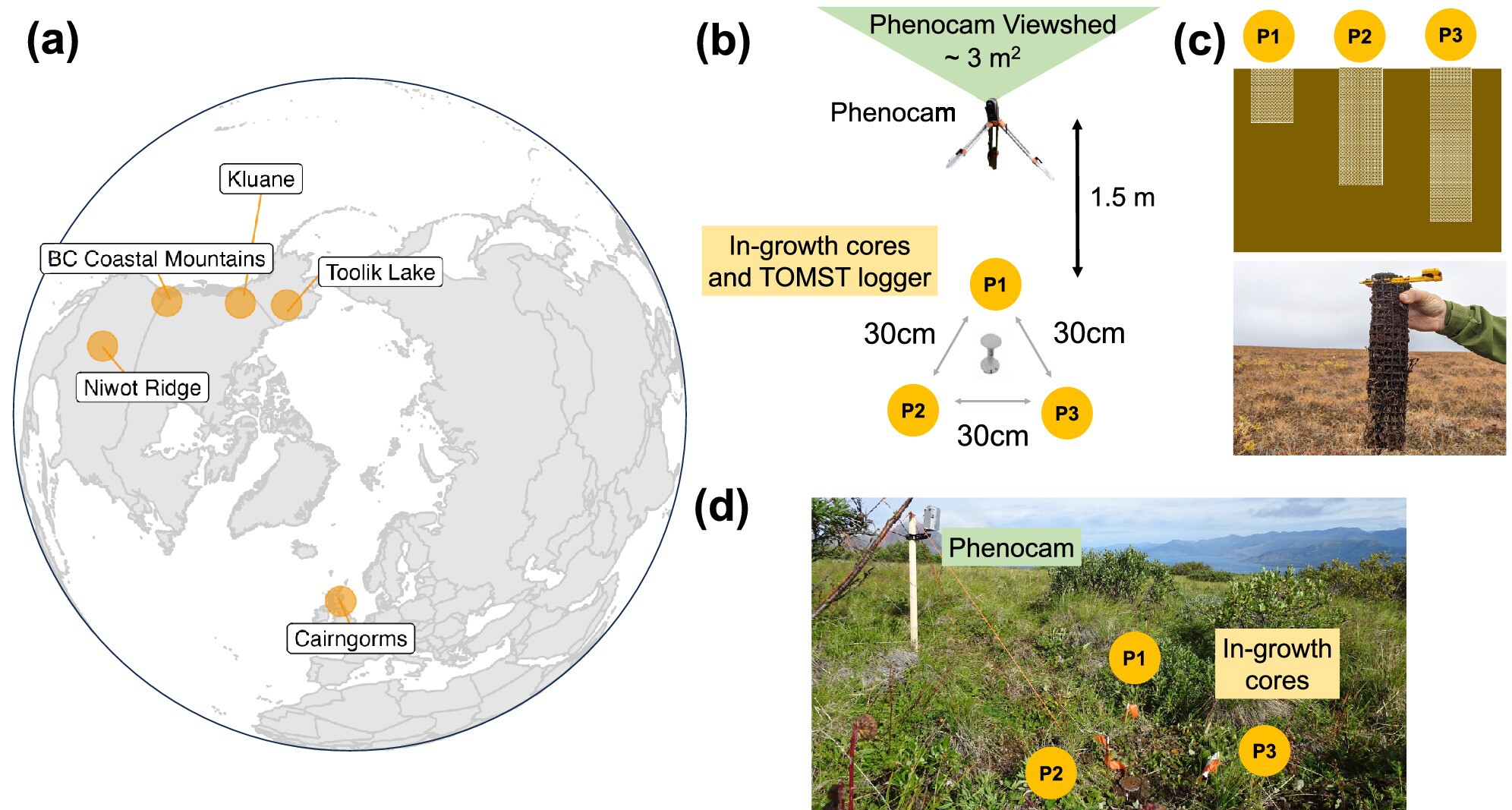
In tundra ecosystems, plant roots continue growing well beyond the above-ground growing season productivity peak. We found that plant community type, rather than microclimate, plays a key role in determining root growth patterns, with graminoid roots in particular showing a late-season growth surge. As the climate warms and tundra vegetation communities shift, these changes could impact long-term below-ground carbon storage and overall carbon cycling in arctic and alpine tundra landscapes.
Sustainable Land Use Enhances Soil Microbial Respiration Responses to Experimental Heat Stress
- First Published: 24 April 2025
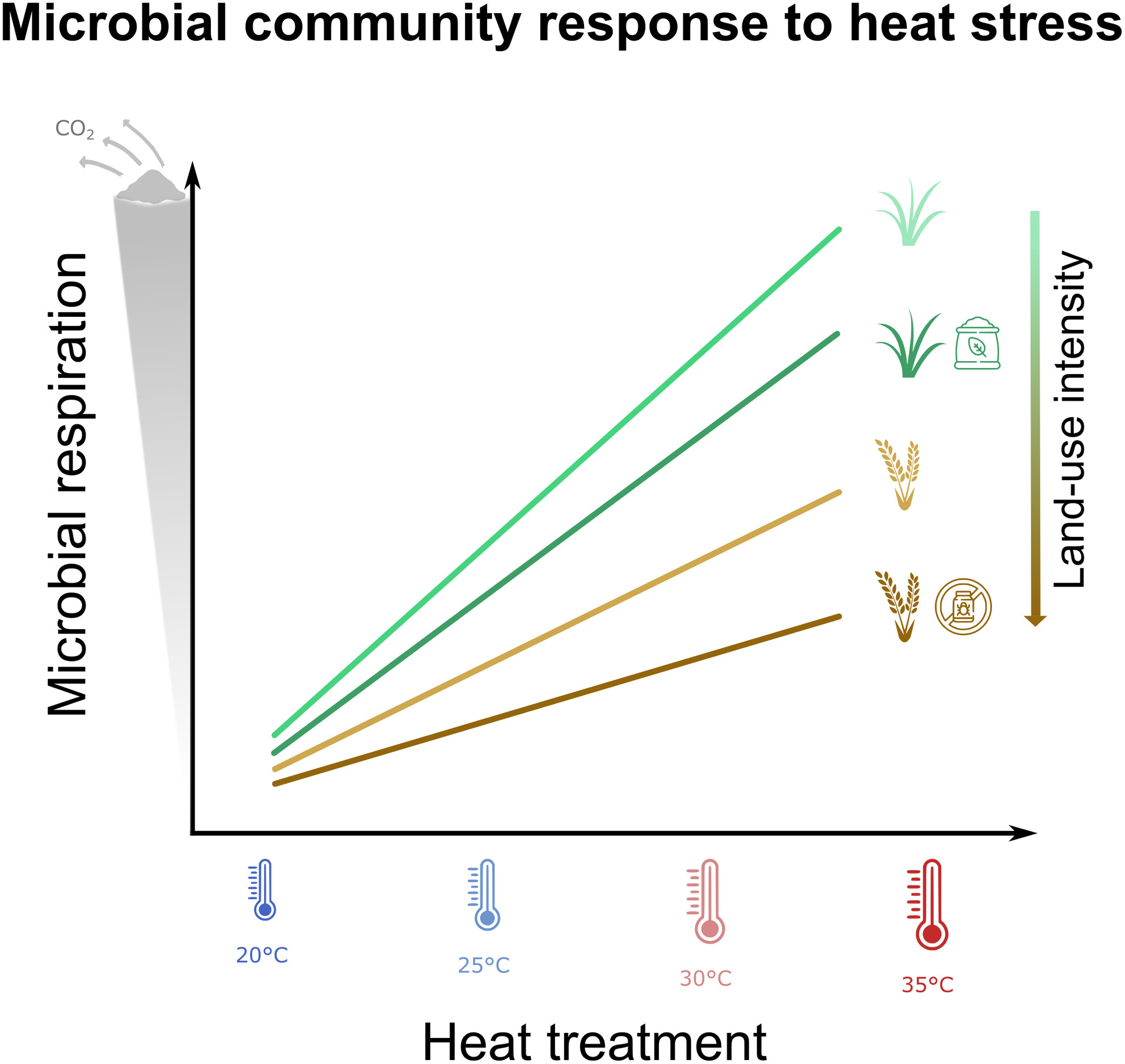
Soil microbes are crucial for healthy ecosystems, but climate change and intensive farming may reduce their functioning. We tested how heat stress affects microbial respiration in soils under different farming practices and climate conditions. Results showed that intensive land use and future climate both reduced microbial respiration. Heatwaves generally increased respiration, but soils from intensive systems responded less. In addition, soils with more fungi and under less intensive use had a stronger response to the stress. These findings suggest that sustainable land use can help soil microbes stay active under climate stress, protecting essential ecosystem functions like nutrient cycling and carbon storage.
Climate Variability Modulates the Temporal Stability of Carbon Sequestration by Changing Multiple Facets of Biodiversity in Temperate Forests Across Scales
- First Published: 26 April 2025
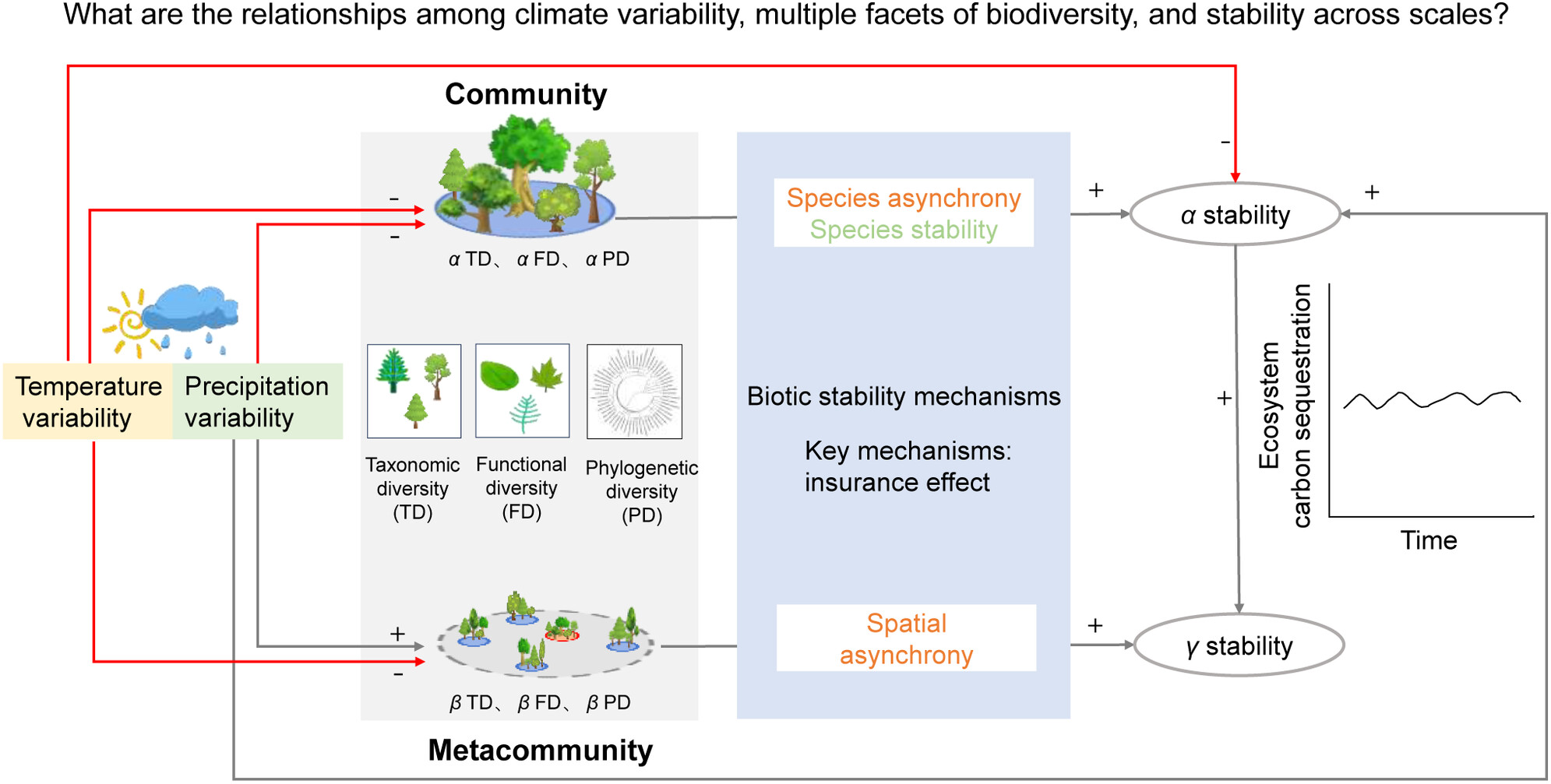
This study investigates the relationships among climate variability, multiple facets of biodiversity (taxonomic, functional, and phylogenetic diversity), and carbon sequestration stability in temperate forest communities across different scales. The results indicate that multiple facets of biodiversity enhance ecosystem stability at various scales, primarily through insurance effects. Temperature variability was negatively correlated with all biodiversity facets, and biodiversity loss reduced stability at different scales. In contrast, precipitation variability exhibits a positive correlation with stability. We suggest protecting multiple facets of biodiversity in the future to mitigate the adverse impacts of climate warming.
Geographical and Environmental Factors Differentially Shape Planktonic Microbial Community Assembly and Resistomes Composition in Urban Rivers
- First Published: 26 April 2025
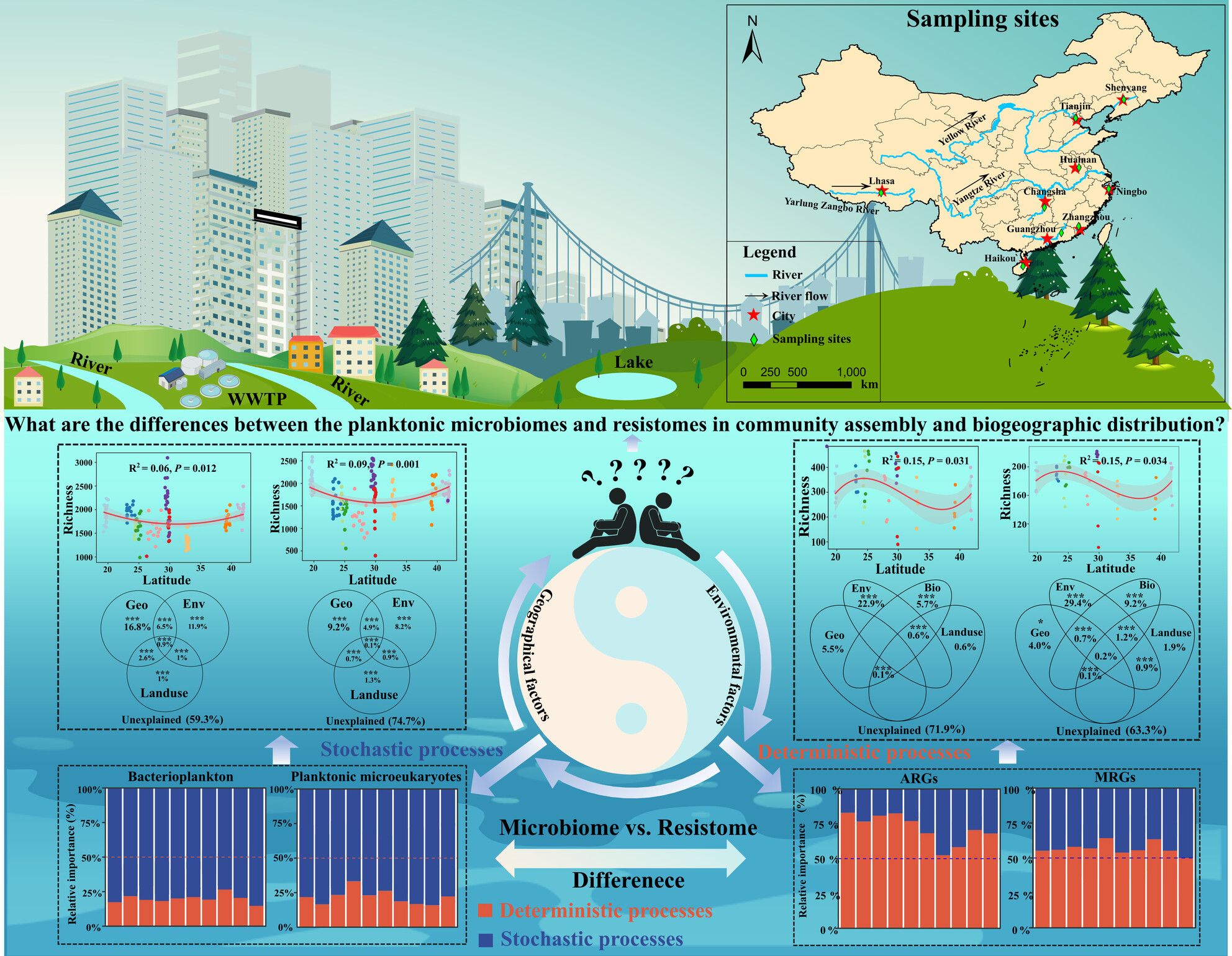
Written Summary: Urbanization accelerates the pollution of microbial emerging contaminants (antibiotic and metal resistomes), posing threats to ecosystems and human health. However, the assembly mechanisms of microbial resistomes in fluvial ecosystems were largely unknown. This study employed amplicon and shotgun metagenomic sequencing to profile the planktonic microbiomes and resistomes across nine Chinese urban rivers and highlighted that the planktonic microbiomes and resistomes were shaped by the stochastic (dispersal limitation) and deterministic (homogenous selection) processes, respectively. These findings shed light on the role of human activities in riverine resistome dissemination, and provide a scientific basis for making suitable strategies for the resistomes' mitigation.
INVITED COMMENTARY
Could Elevated CO2 Lead to Over-Application of Phosphate Fertilizer to Pastures? Implications for P-Limited Ecosystem Responses to eCO2
- First Published: 26 April 2025
RESEARCH ARTICLE
Warming Disrupts Plant–Fungal Endophyte Symbiosis More Severely in Leaves Than Roots
- First Published: 26 April 2025
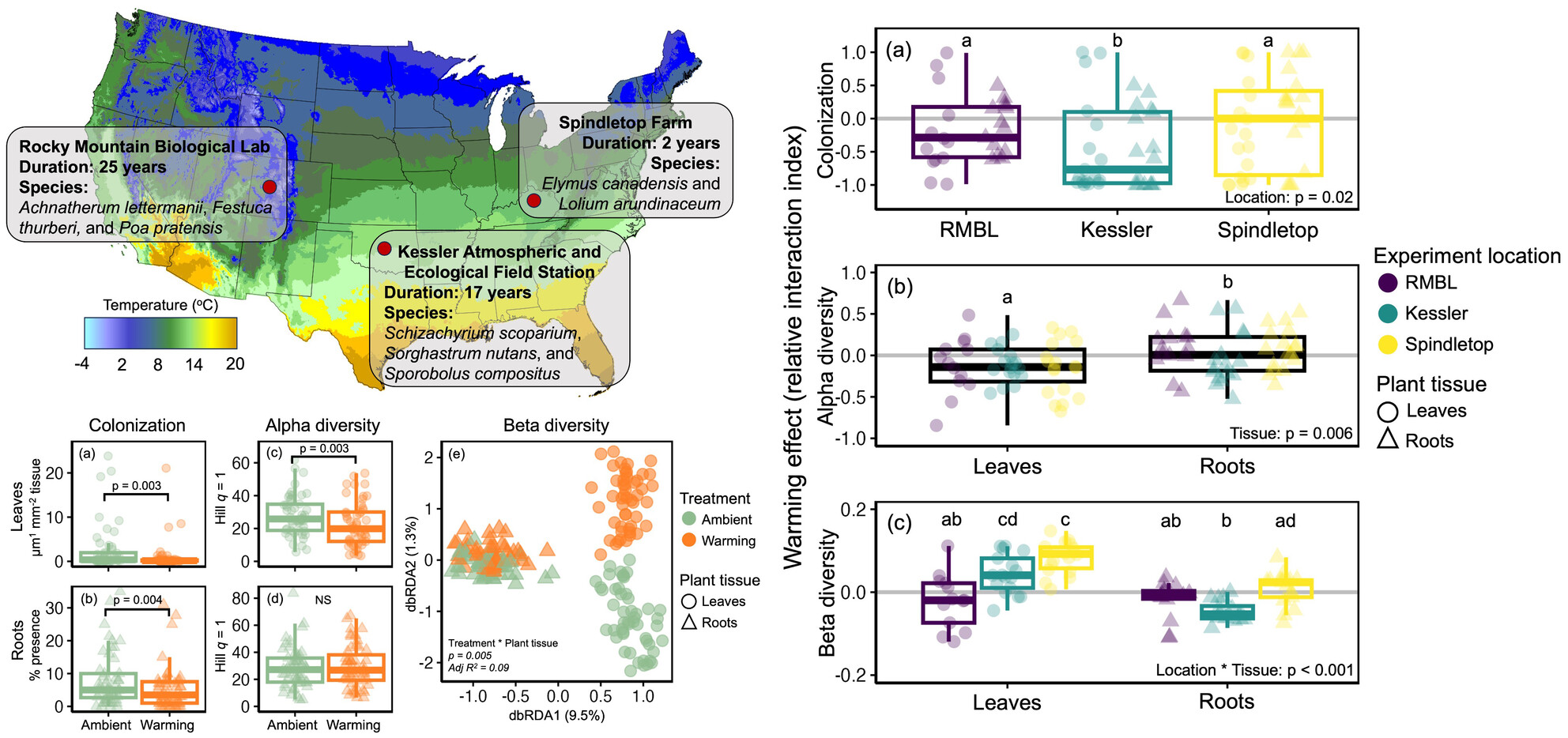
Warmer temperatures associated with climate change disrupt relationships between plants and the fungi living in their leaves and roots by reducing the abundance and diversity of these fungi—especially in leaves. However, the strength of warming disruptions to plant-fungal symbiosis can change based on local factors like plant community composition, environmental conditions, and the duration of warming. These changes may weaken plants' ability to cope with stresses from climate change, suggesting that this symbiosis might not reliably promote plant resilience in a warming world.
Impacts of Climate-Land Dynamics on Global Population and Sub-Populations of a Desert Equid
- First Published: 26 April 2025
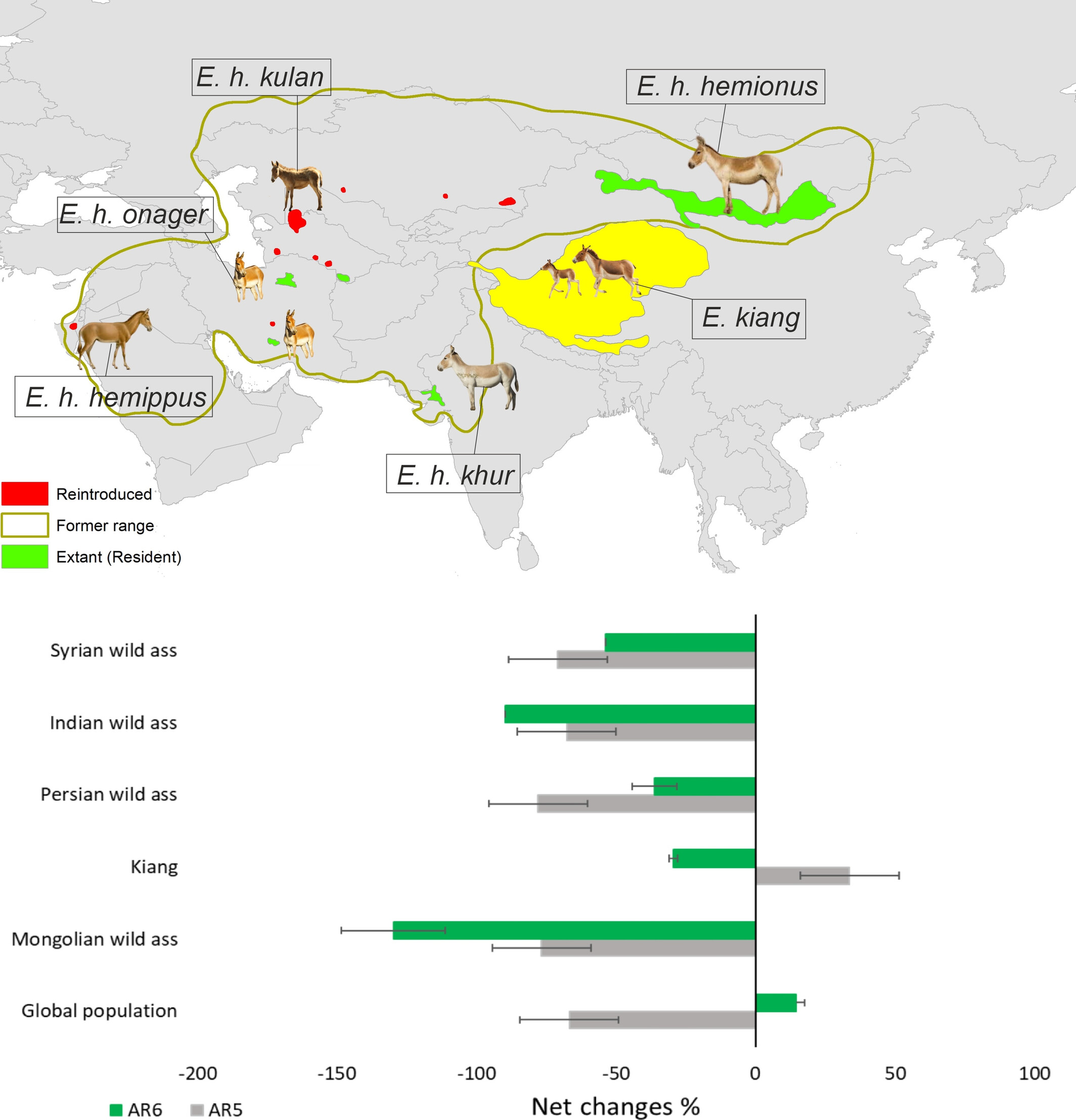
Our study investigates the impacts of climate change and land-use change on the Asiatic wild ass (Equus hemionus), a near-threatened species in Asia. Utilizing species distribution modeling, we assess suitable habitats at both global and sub-population scales across historical, current, and future scenarios, informed by the Fifth and Sixth Assessment Reports. Our results reveal a significant decline in suitable habitat and viable patches for all sub-populations, with considerable uncertainty observed, especially at the global level. These findings underscore the importance of integrating both global and sub-population dynamics in conservation strategies to protect critical habitats and preserve biodiversity amidst environmental change.
REVIEW
Physiological Traits for Predicting Poleward Extensions in Tropical Fishes: From Lab to Management
- First Published: 28 April 2025
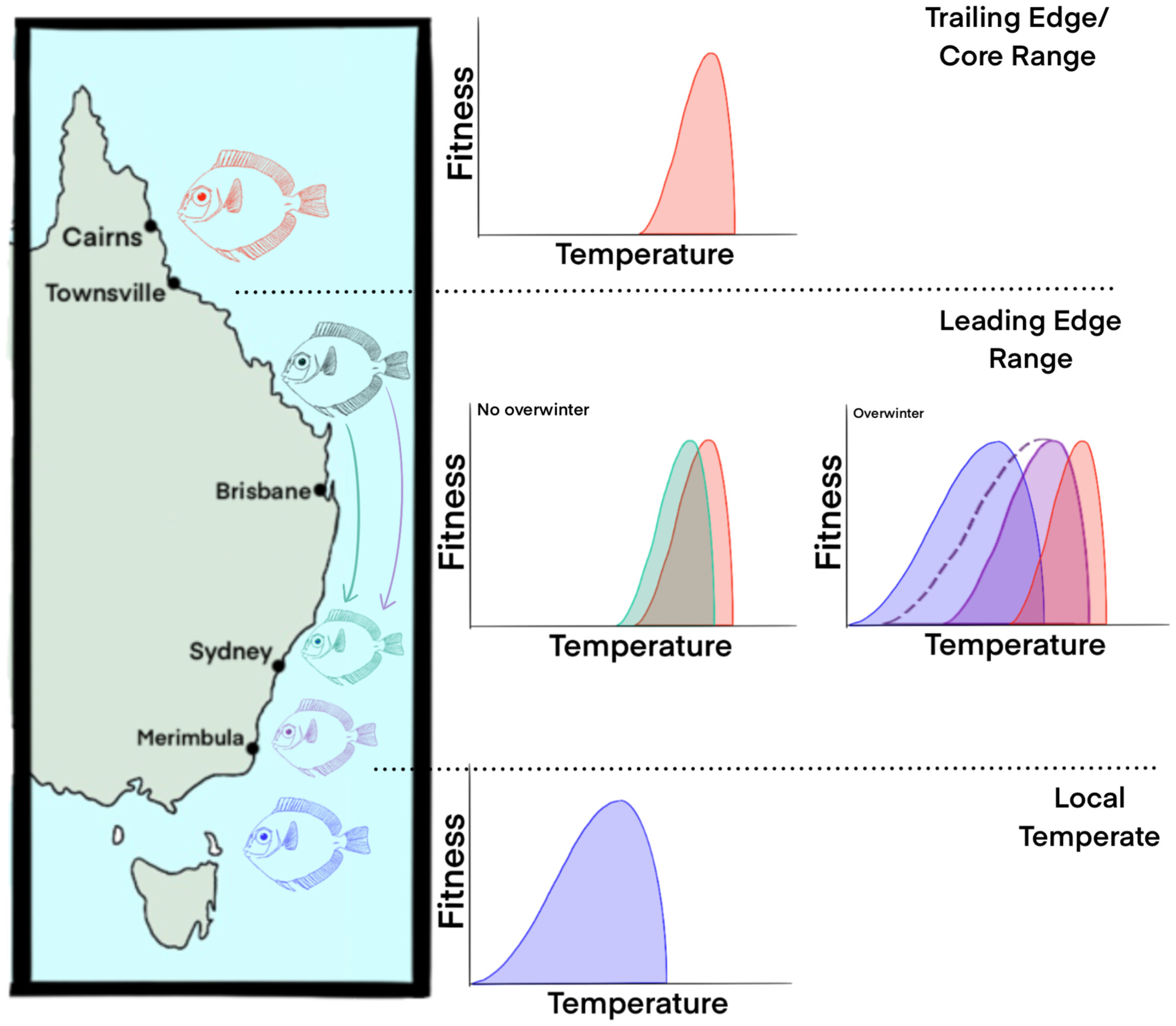
We review the physiological mechanisms that permit poleward range expansions of tropical reef fishes into temperate waters. Filling in key knowledge gaps, we develop a framework to improve the implementation of physiological traits in improving our understanding of how tropical species adapt to temperate habitats.
RESEARCH ARTICLE
Multi-Species Telemetry Quantifies Current and Future Efficacy of a Remote Marine Protected Area
- First Published: 15 April 2025
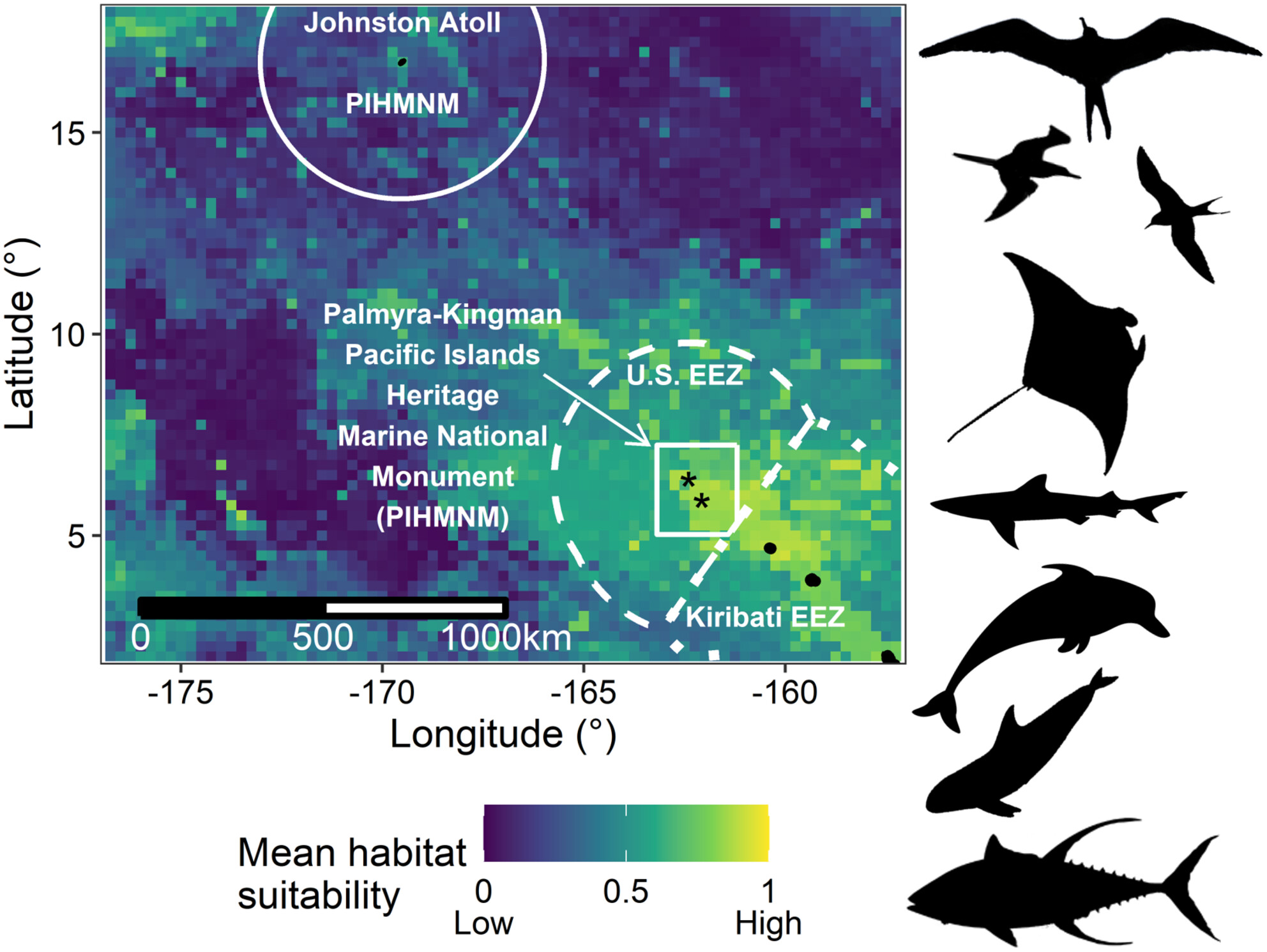
We combined animal telemetry, remote sensing, and projected future environmental scenarios to assess how nine species used a remote marine protected area (MPA) in the Pacific Ocean under current and future conditions. Seabirds, cetaceans, tuna, manta rays, and reef sharks used habitats on both sides of the MPA boundaries and were predicted to use habitats inside and adjacent to the MPA in the future. Our three-tiered, holistic approach could help design, study, and monitor MPAs around the world.




